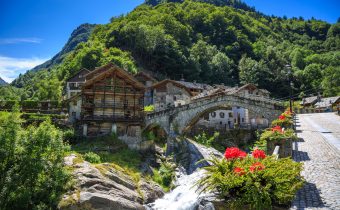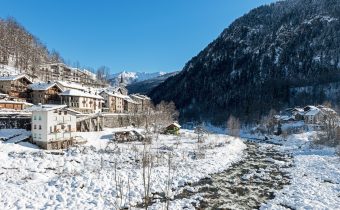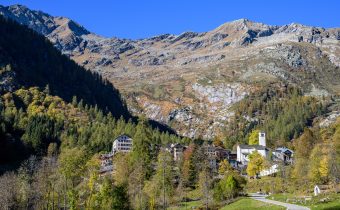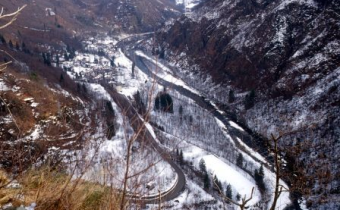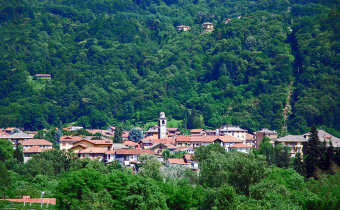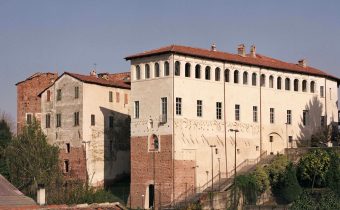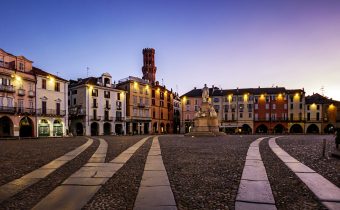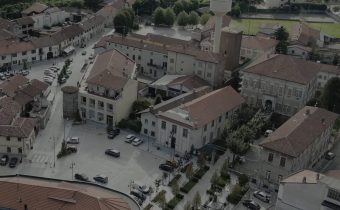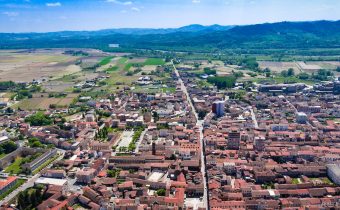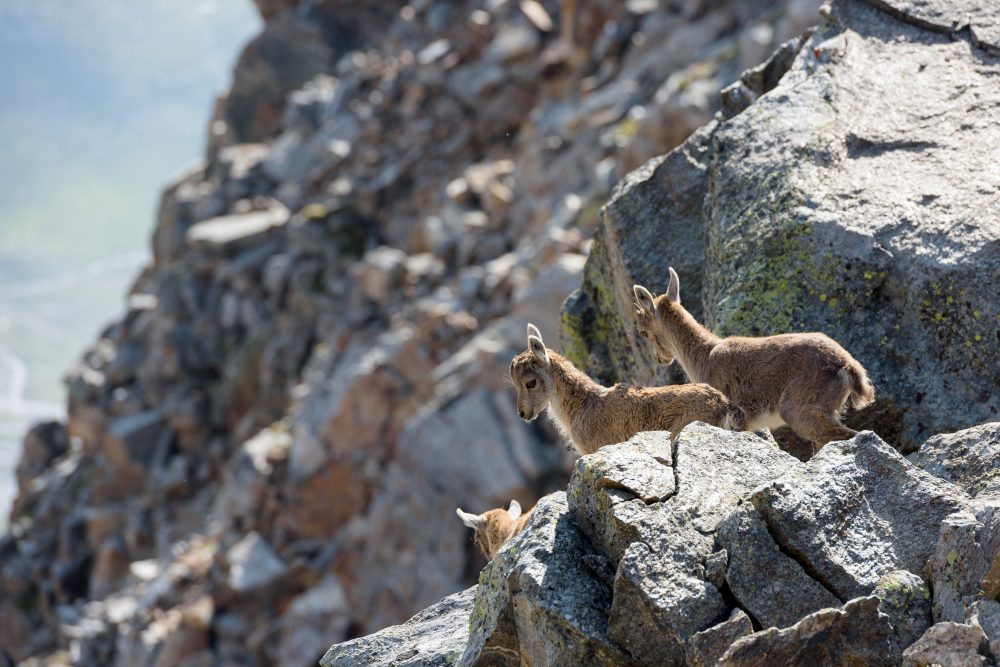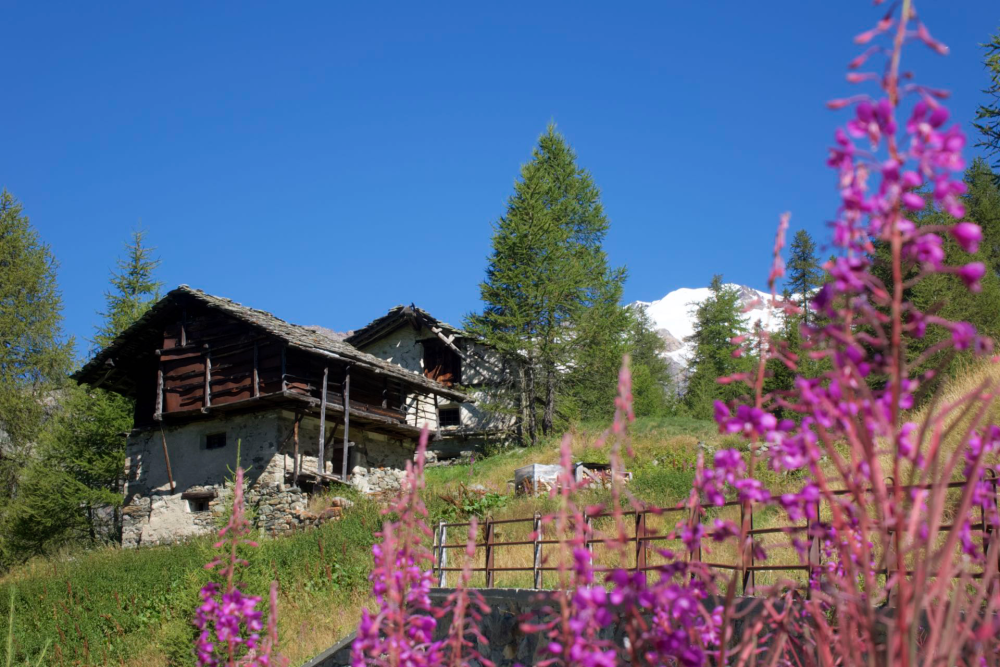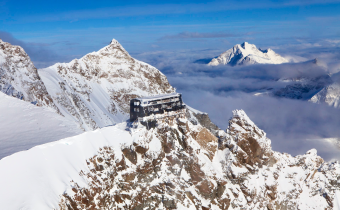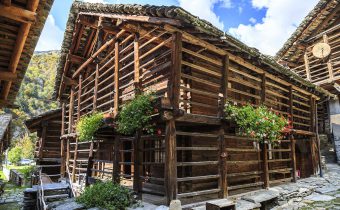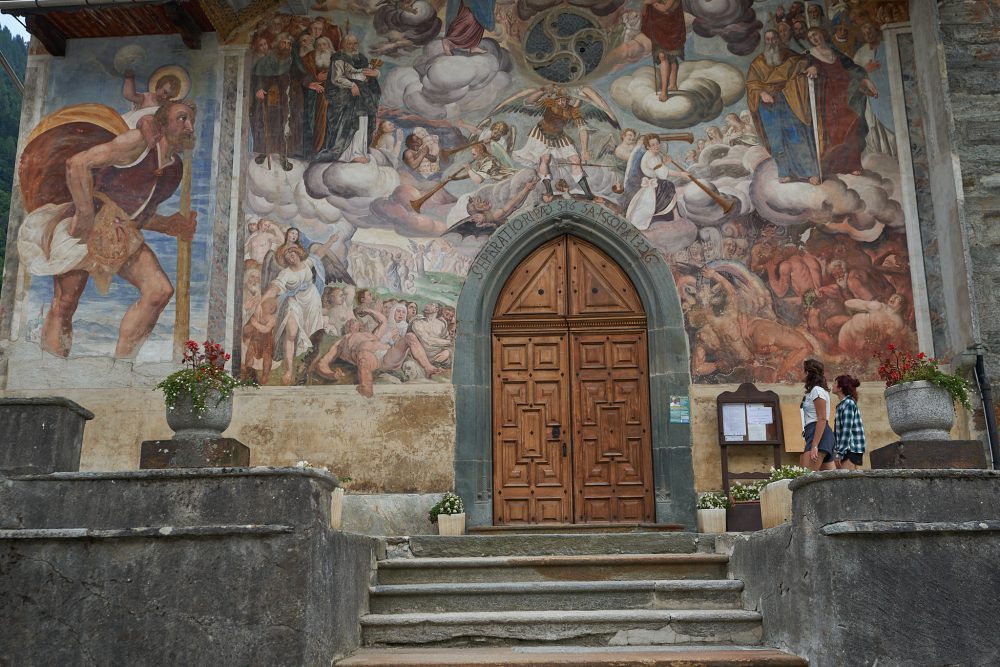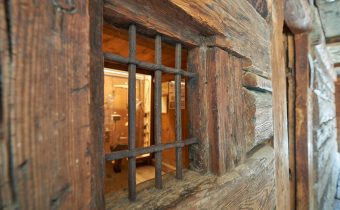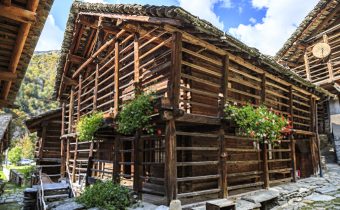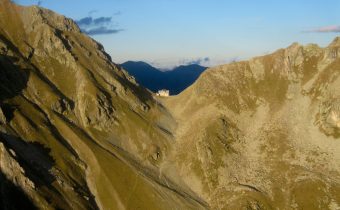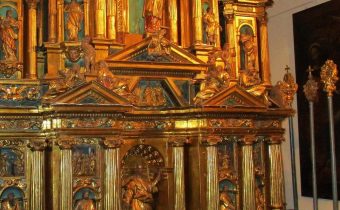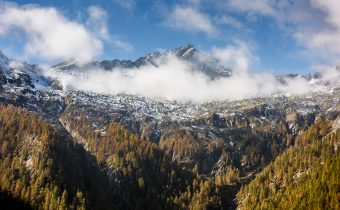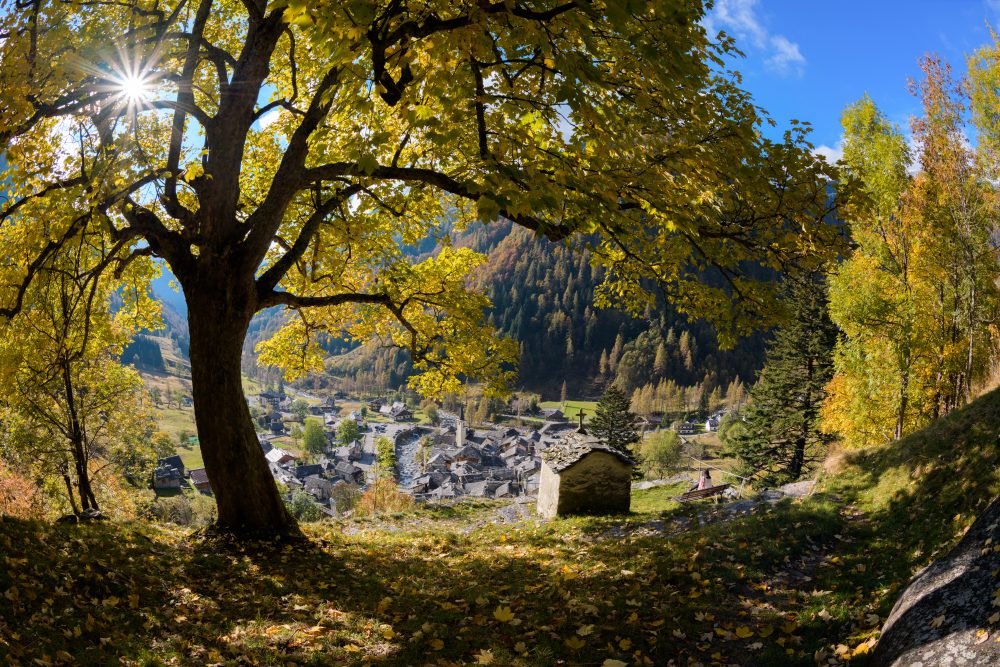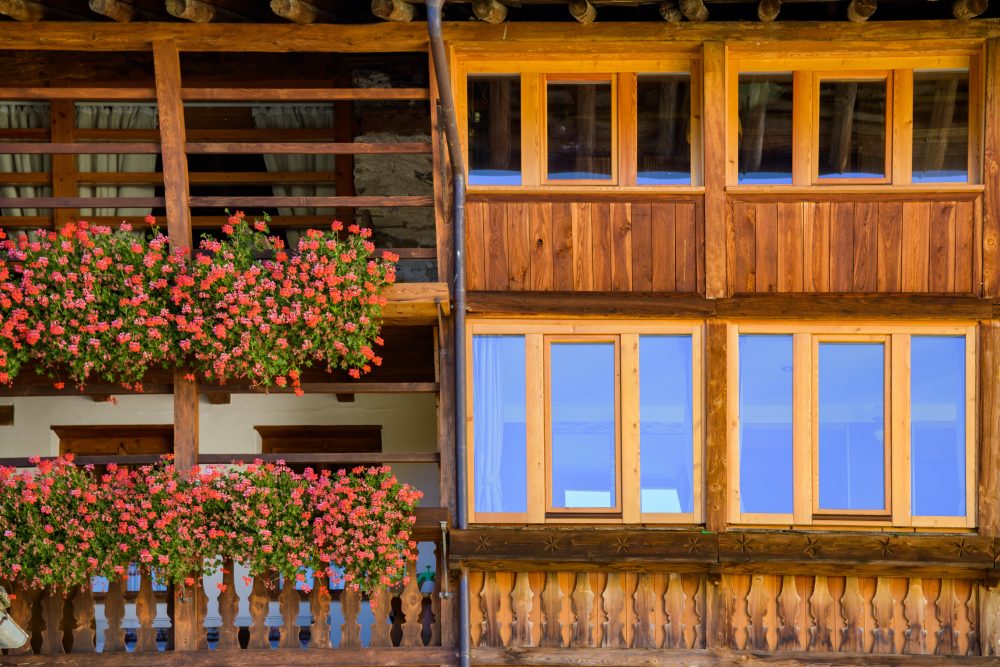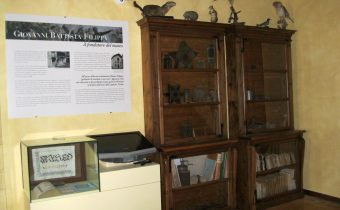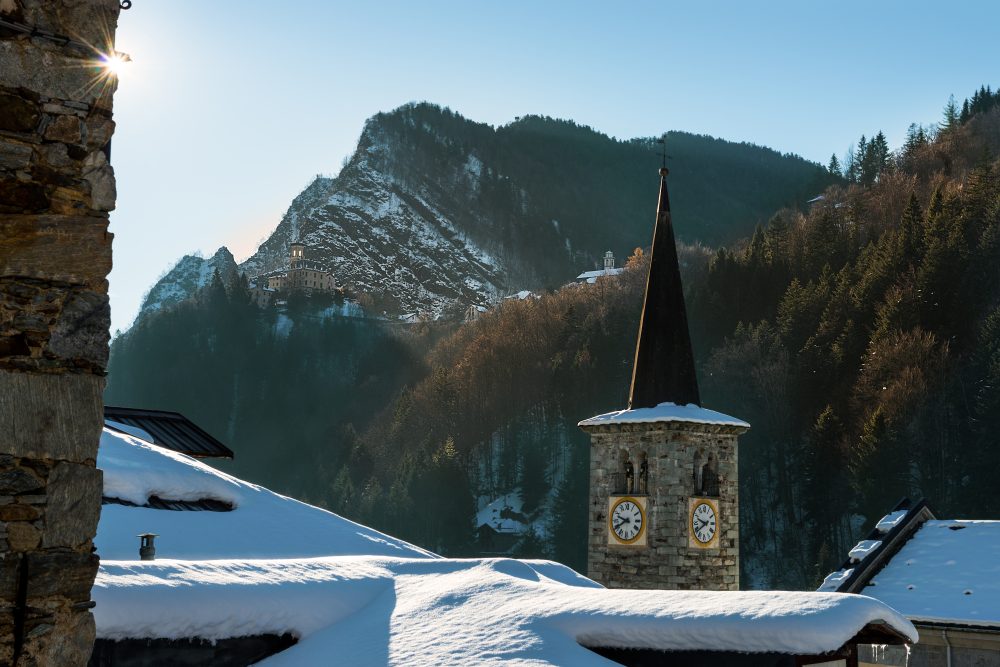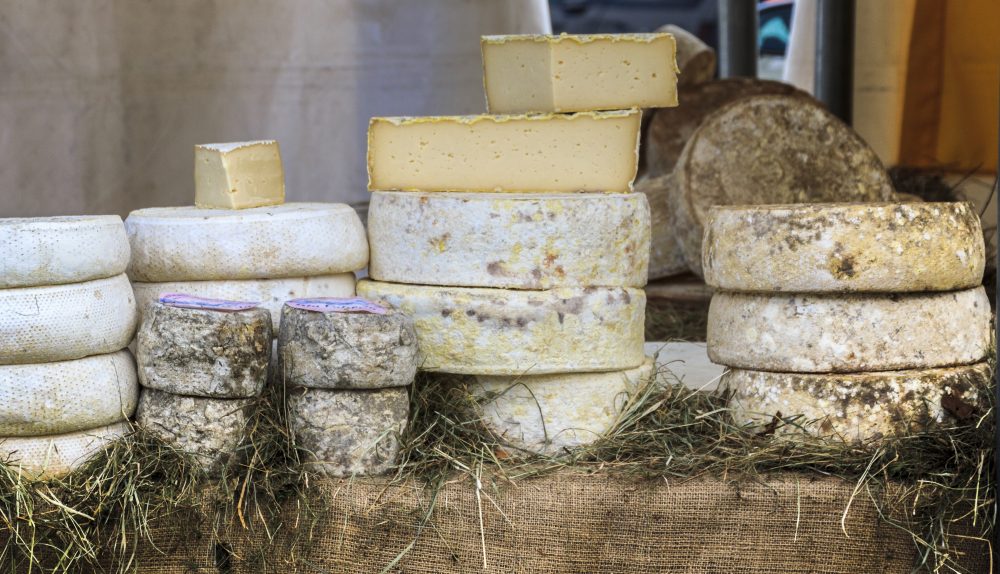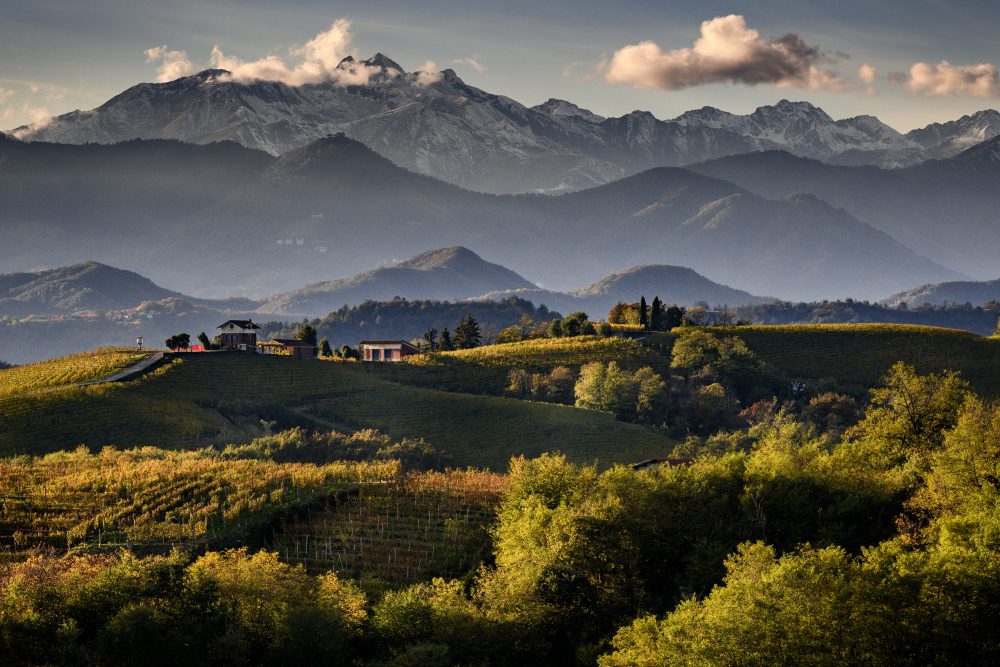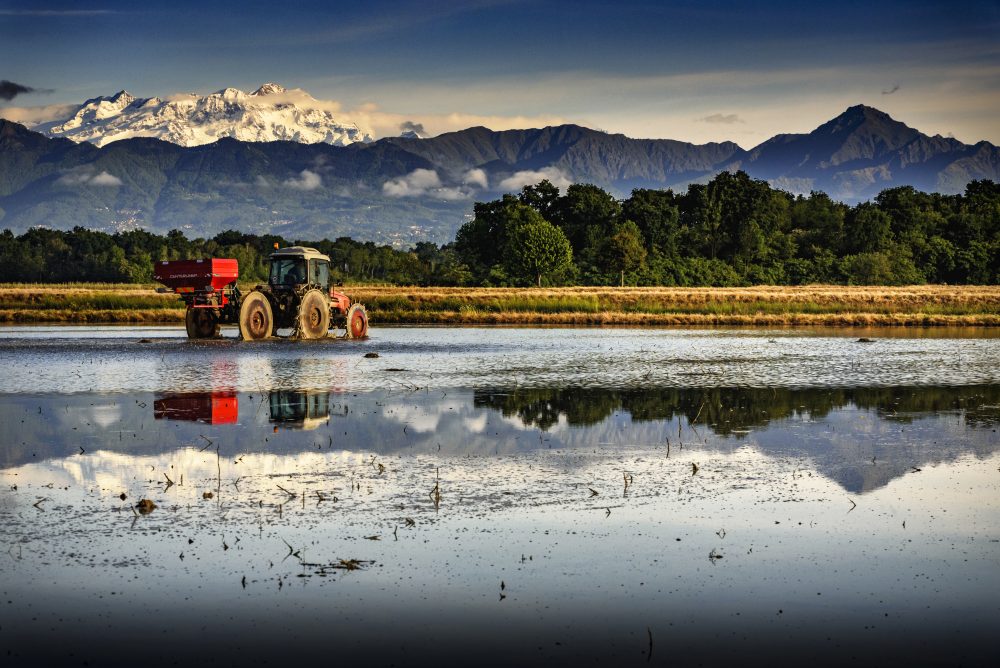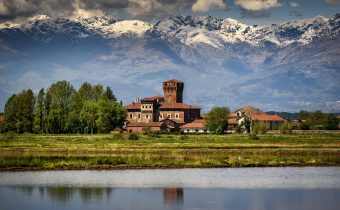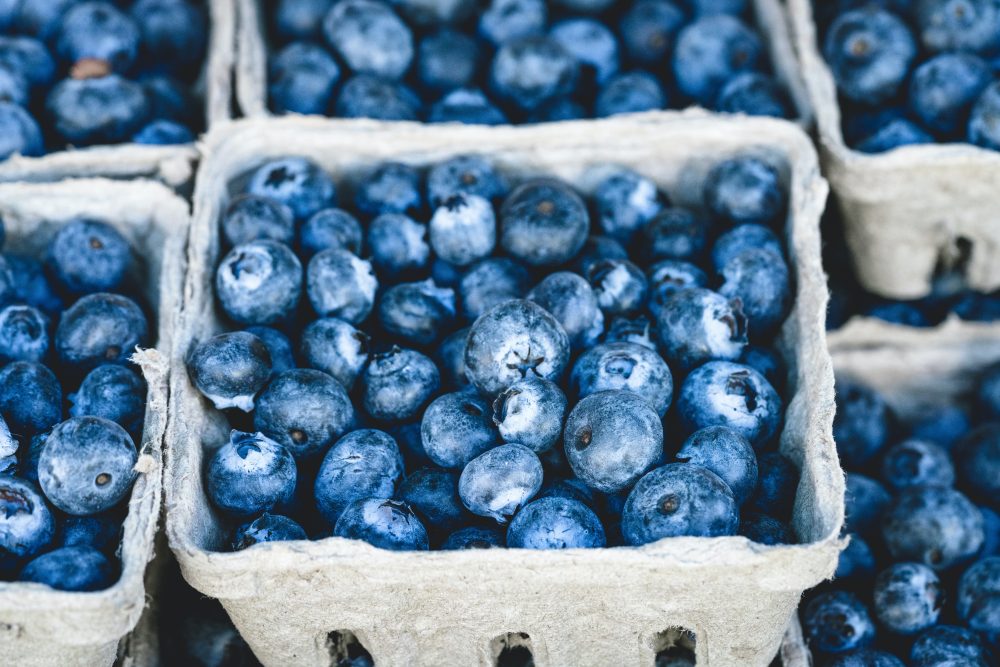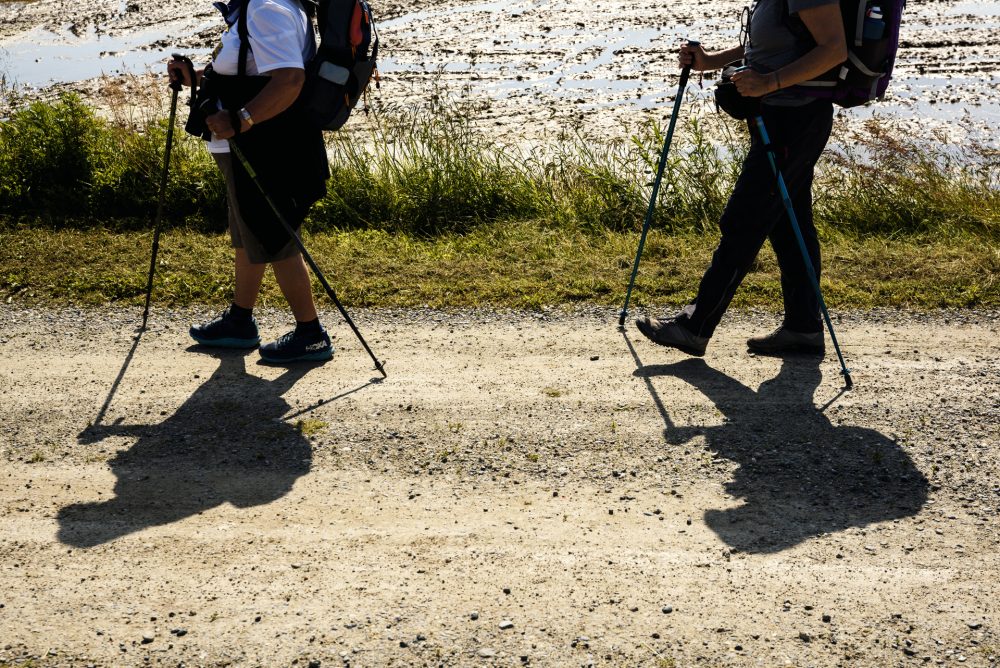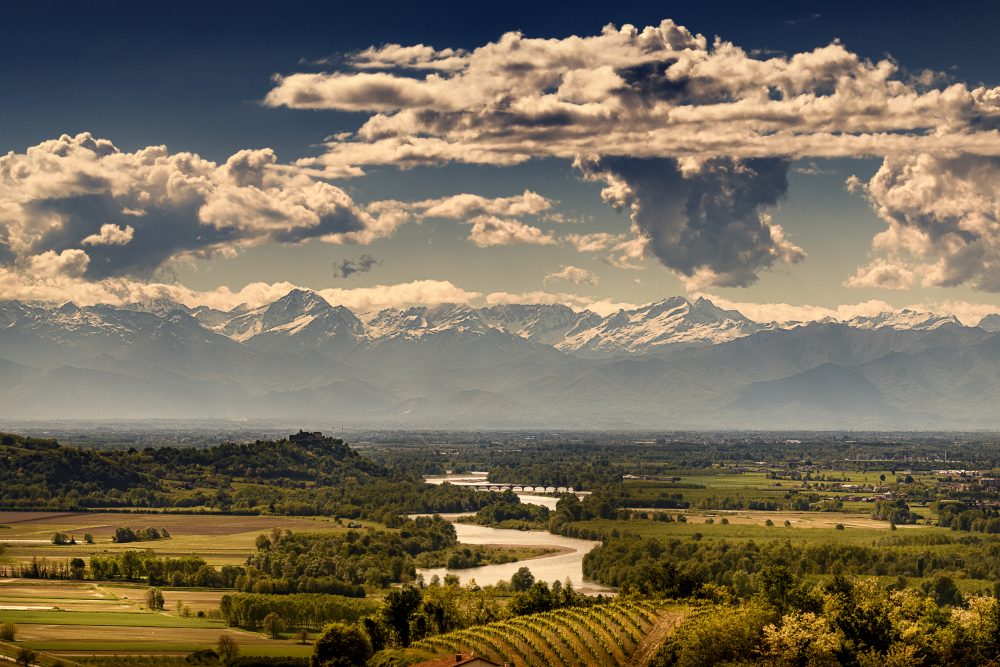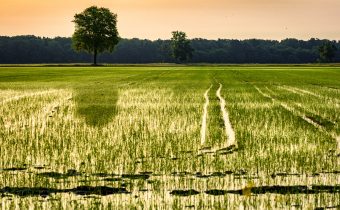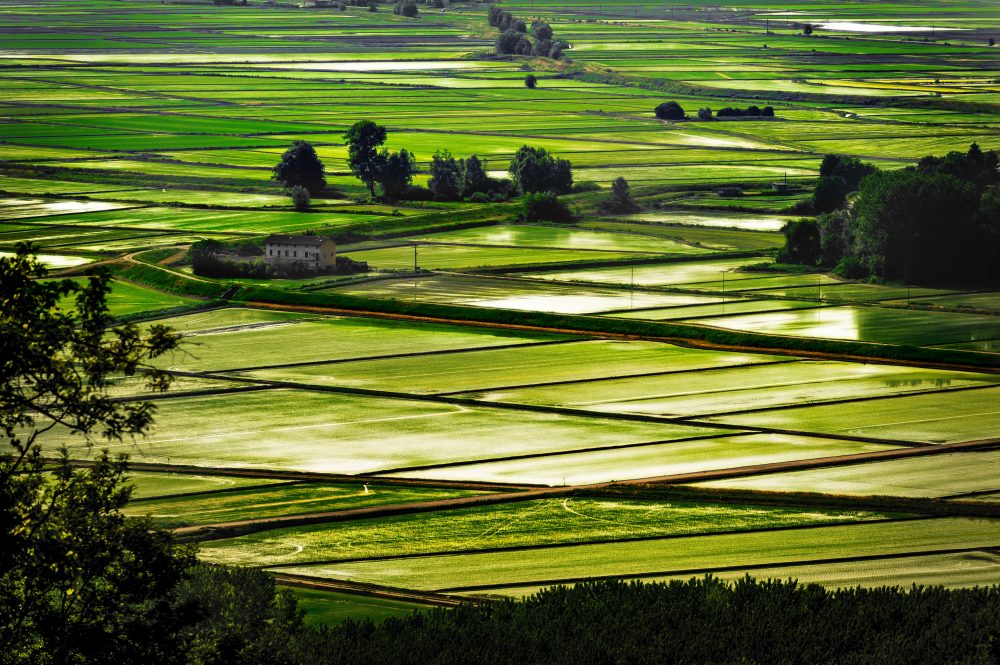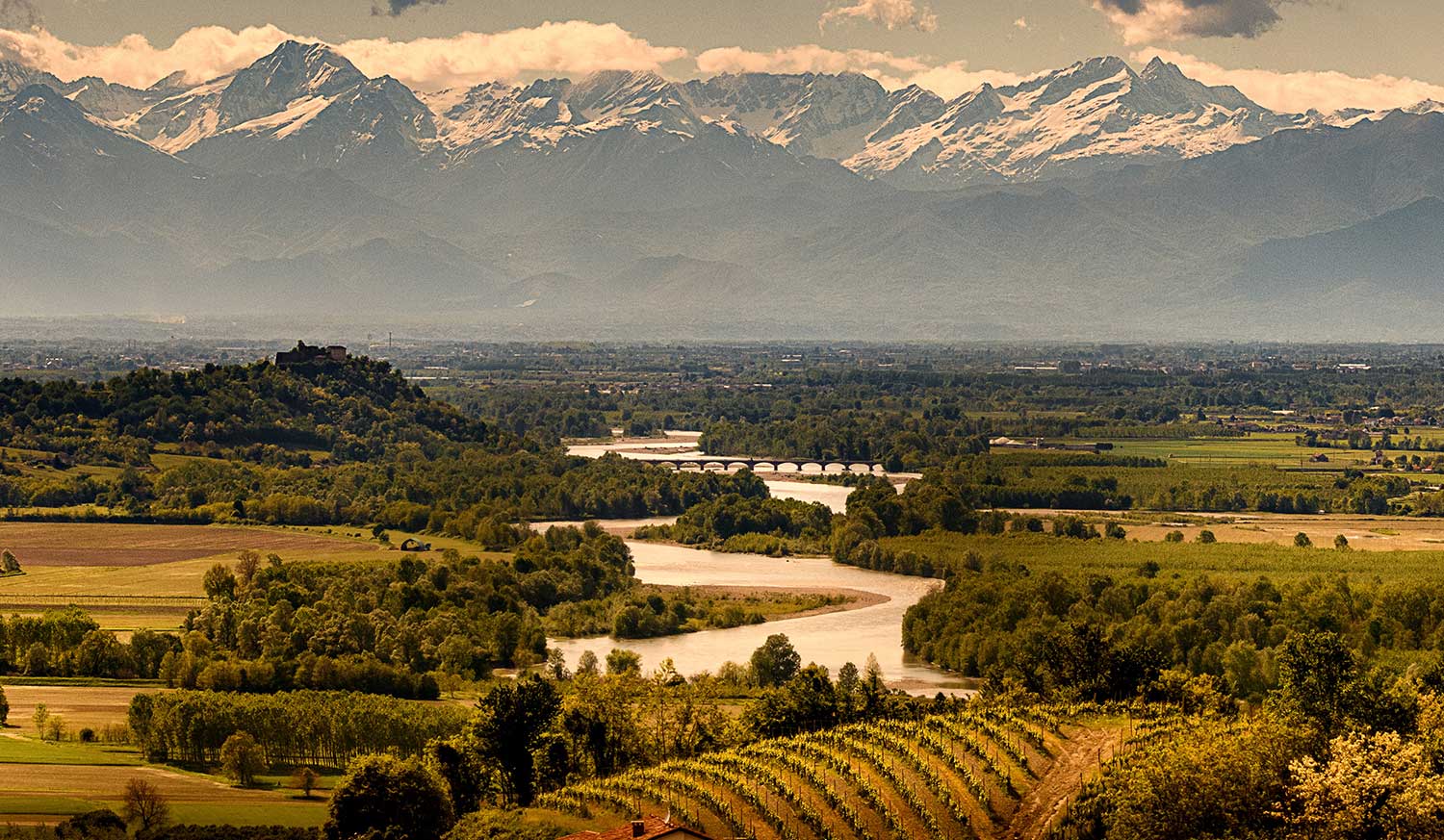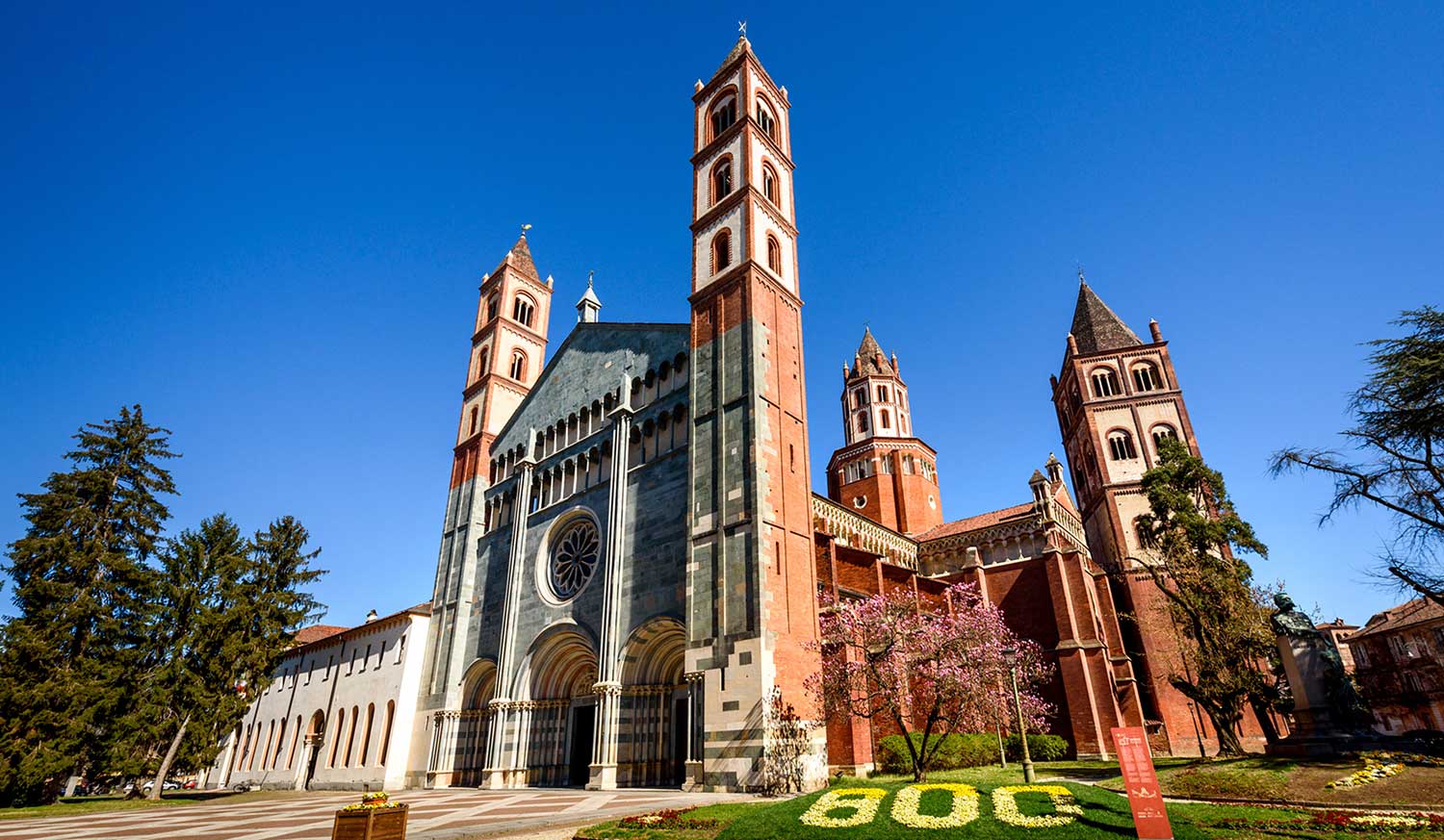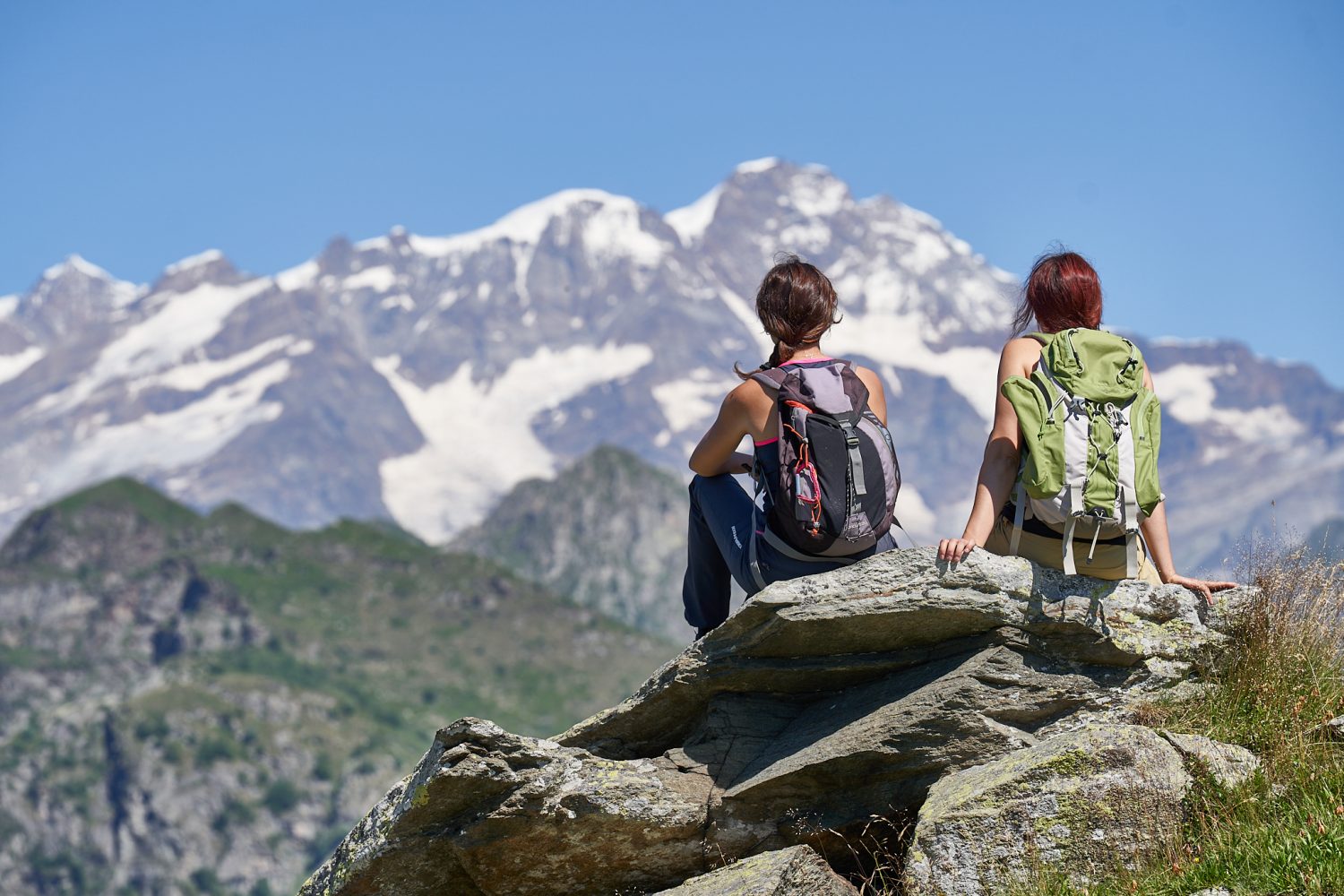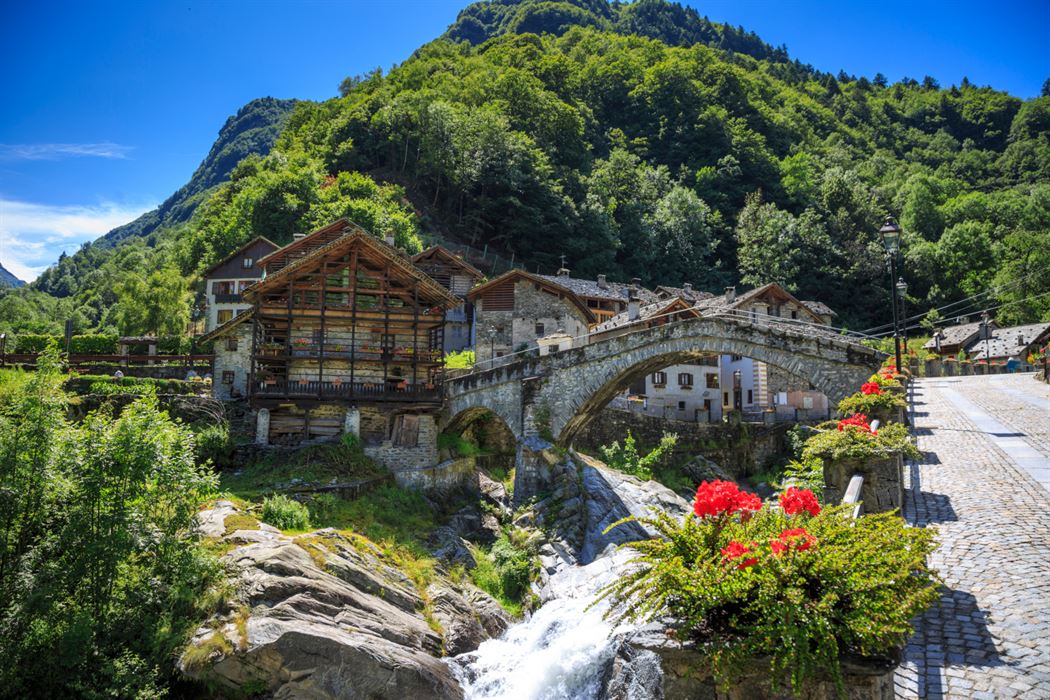
Villages and towns
discover the hidden beauties of historic villages
Nature, art, culture, sports, food and wine, crafts, traditions and curiosities: explore the fascinating villages of Valsesia and Vercelli area!
where can we
take you?
Alagna Valsesia
Description:

On the slopes of Mount Rosa lies the characteristic village of Alagna Valsesia, a magical place surrounded by nature and the authentic atmosphere of times gone by. Come and discover Alagna!
alagna valsesia- im land
Alagna Valsesia lies at the foot of the Mount Rosa massif, at an altitude of 1,154 m, and is included in the High Valsesia Nature Park area. Formerly called Im Land in the Titzch dialect, it dates back to 1200 when some communities of German origin, the Walser people, settled in the area. Alagna consists of several villages attached to the city centre and, as of 1 January 2019, incorporated the neighbouring municipality of Riva Valdobbia.
Five side valleys branch off from the valley floor, where the village is located: The Otro Valley, with its characteristic, perfectly preserved Walser villages; the Olen Valley, traversed by the ancient mule track leading to Gressoney-La-Trinité; the Bors Valley, which includes rich alpine pastures that belonged to the Counts of Biandrate in the Middle Ages; and the Mud Valley, characterised by the profile of Mount Tagliaferro and traversed by the mule track leading to Rima in the Sermenza Valley.


A RICH HISTORIC CENTRE
Alagna preserves a rich artistic heritage and strong traditions that permeate every corner of the area. The culture of the Walser people, which is still felt and preserved by the people living in these places, is emphasised in the Ecomuseum and can be breathed in when walking through the centre and along the narrow streets of the neighbouring villages, where you can admire the unmistakable architecture of the houses made of wood and stone. In the hamlet of Pedemonte you will also find the impressive Walser Museum where, in a typical three-storey house dating back to 1628, the rooms of an old house and its more traditional surroundings are reconstructed with remarkable accuracy.
In the central square Piazza Grober stands the Parish Church of St. John the Baptist, characterised by its high pointed spire bell tower with typical late Gothic features.
Not far away, the Theatre of the Alagna Union, inaugurated on 30 December 1900, houses the allegories of Ars and Labor, works by the famous Valsesian artist Camillo Verno.
A PARADISE FOR SPORTSMEN
The Mount Rosa massif, which beautifully frames Alagna and, at 4,634 m, is the second highest mountain in Italy. It offers countless alternatives for all outdoor enthusiasts. In winter, Alagna is a favourite destination for ski and freeride enthusiasts who, in the Monterosa Ski District, can discover 180 km of slopes with adrenaline-fuelled descents all the way to Gressoney and Champoluc in the Aosta Valley.
In summer, the area is transformed into a paradise for those who love sports and authentic nature: trekking, mountain bike trails, climbing and paragliding are just some of the activities you can try in Alagna.
Breathtaking views and a large variety of flora and fauna can be admired in the High Valsesia Nature Park. Established in 1979, at the Fum Bitz alpine pasture, at an altitude of 1,603 m, features a visitor centre with annexed high altitude botanical garden.


THE HIGHEST ROOF IN EUROPE
On the Gnifetti summit, at 4,554 m, stands Capanna Regina Margherita. Inaugurated in August 1893 in the presence of Queen Margaret of Savoy, it prides in being the highest alpine lodge in Europe..
Numerous mountaineers venture to the ascent of Capanna Regina Margherita during the season. The traditional access route starts from Alagna Valsesia, the trail of the first ascent to the summit by parish priest Giovanni Gnifetti in 1842.
However, Capanna Regina Margherita can be reached along different routes: starting from Capanna Giovanni Gnifetti or the nearby Capanna Città di Mantova; starting from the Swiss Mount Rosa Hütte, or from Capanna Resegotti; in the latter case, following the Signal ridge.
The Monterosa Sky Marathon has been held here since 1993, a mountain running race that starts in the village of Alagna, goes up to Capanna Regina Margherita, and then returns along the same route. An impressive challenge for sportsmen!

how to get to alagna valsesia
BY HIGHWAY
A4 Milan-Turin A26 junction at Biandrate, direction Gravellona Toce, for Romagnano-Ghemme. From Romagnano Sesia follow SP 299 to Varallo-Alagna Valsesia.
A26 Genoa-Gravellona Toce, exit Romagnano-Ghemme.
From Romagnano Sesia follow the SP 299 for Varallo-Alagna Valsesia
BY BUS
Daily bus lines connect Alagna with Varallo and Vercelli.
Don’t miss in this area
Discover the wonders of Alta Valsesia
Art and culture, nature, ancient traditions, food and wine excellence and outdoor activities: let Alta Valsesia win you over!
Loc. Riva Valdobbia
Description:

The only resort in the Valsesia region from which one can enjoy a full view of the Mount Rosa Massif, Riva Valdobbia offers its visitors breathtaking scenery and centuries-old history.
THE TOWN OF RIVA VALDOBBIA
Riva Valdobbia, nestled in the Valsesian mountains and located on the right orographic bank of the Sesia river, is an interesting tourist resort that offers visitors, just a few kilometres before entering the town, a majestic view of the south-east face of Mount Rosa.
A small village of Walser origins, it houses the Rabenardo Ethnographic Museum established by the Locca family in a typical Walser dwelling.
Valsesia and Riva Valdobbia were merged into a single area called “Twin Stones” and, as of 1 January 2019, the two municipalities are merged again.
Riva Valdobbia is surrounded by numerous hamlets that offer glimpses of the history and culture associated with mountain living: Balma, Boccorio, Buzzo, Cà di Janzo, Cambiaveto, Cà Morca, Cà Piacentino, Cà Verno, Cà Vescovo, Gabbio, Isolello, La Montata, Oro, Peccia, Piana Fuseria, Piane, Rabernardo, Sant’Antonio and Selveglio.

THE CHURCH OF ST. MICHAEL
In the main square of Riva Valdobbia stands the majestic Church of St. Michael the Archangel. Dating back to the 15th century, it is a treasure trove of works of art.
The beautiful fresco that dominates the entire façade depicting the Last Judgement by Melchiorre D’Enrico, artist from Alagna, is impressive.
The spacious interior has a single nave surrounded by several side chapels painted and stuccoed with fine decorations. The vault and dome feature 18th century frescoes by Borsetti and Orgiazzi. The marble altar dates back to 1749, and the choir and pulpit to 1760.
THE VOGNA VALLEY
From Riva Valdobbia, which offers a postcard-perfect view of Mount Rosa, you can set out to explore Val Vogna by following the “Via Regia”, an ancient communication route with the Aosta Valley. Used by markets and migrants, it passes through enchanting hamlets to Colle Valdobbia where the historic Sottile Hospice, built in 1823 by Canon Sottile, is located. The particularly wild Vogna Valley, narrow and wedged between mountains, is dotted with beautiful Walser villages and numerous small oratories of considerable historical and cultural importance.
Food and wine enthusiasts should head for the unspoilt Maccagno alpine pasture, where the namesake cheese, Toma Maccagno (PDO), one of the most renowned cheeses in all of Valsesia and a slow food presidium, is produced.
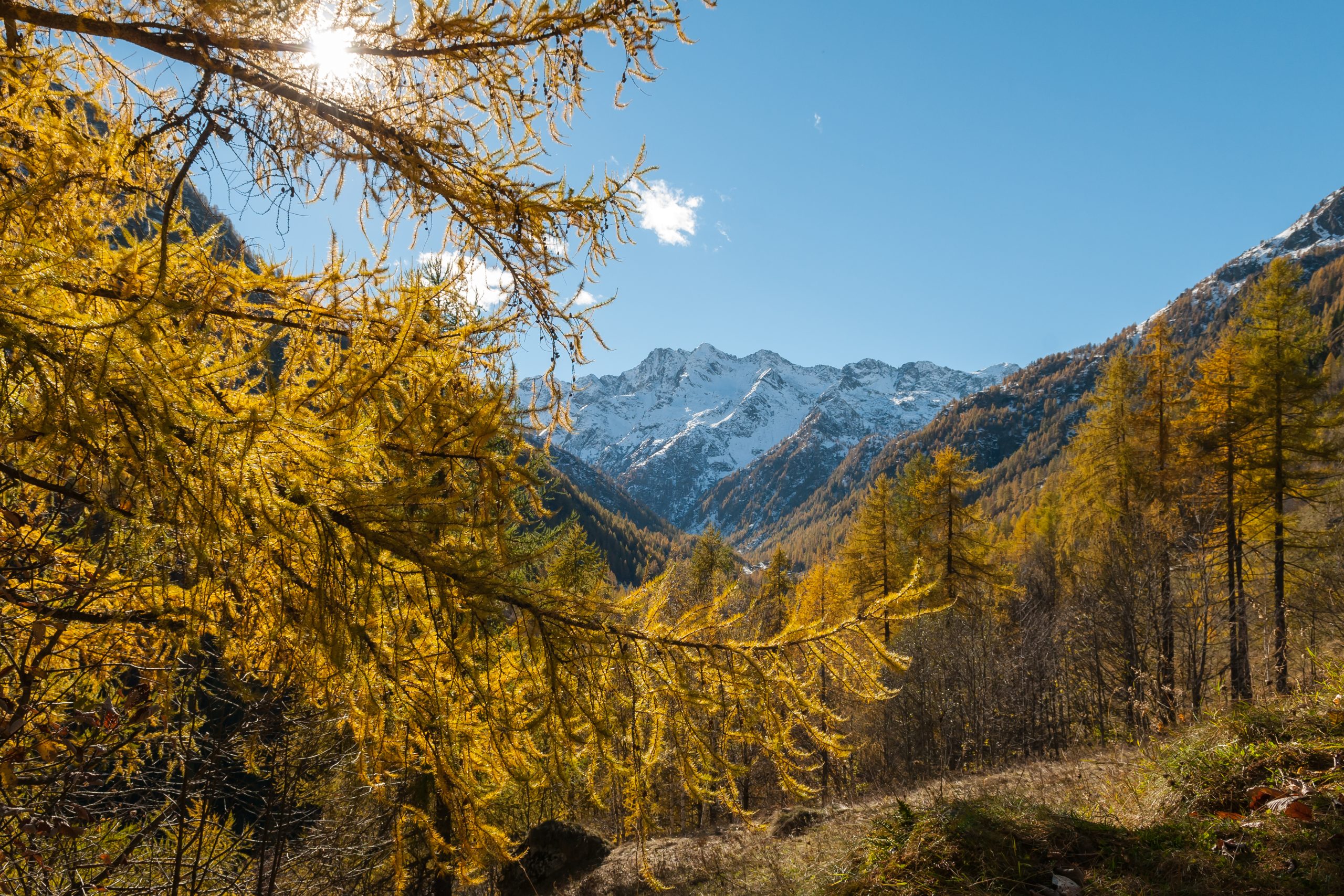
Don’t miss in this area
Discover the wonders of Alta Valsesia
Art and culture, nature, ancient traditions, food and wine excellence and outdoor activities: let Alta Valsesia win you over!
Mollia
Description:

Situated on the banks of the River Sesia, at the point where the valley narrows, Mollia is a pretty village nestled between scenic peaks.
THE TOWN OF MOLLIA AND ITS HAMLETS
The pretty town of Mollia achieved independence from the town of Campertogno in 1722. It is made up of small clusters of houses that stand close to the mountains.
After a visit to the parish church of St. John the Baptist, flanked by a portico beautifully frescoed with images of the Stations of the Cross, the old Fucina Mill deserves a visit. It is one of the most interesting sites in the Valsesia Ecomuseum, and one of the few still visible examples of a “seventeenth-century factory
The town of Mollia has ten small hamlets surrounded by vegetation (Curgo, Otra Sesia, Casa Capietto, Piana Toni, Piana Viana, Casacce, Piana Fontana, Molino, Goreto and Grampa) and linked by pleasant paths that offer enchanting views. The circular tour of the hamlets of Mollia, a pleasant route around the village, is the ideal way to discover them all.


lum AND ribebbe
For a long time, the municipalities of Riva Valdobbia and Mollia competed for the possession of Boccorio where, in ancient times, there were factories producing Lum (oil lamps) and Ribebbe, which are small musical instruments resembling mouth harps that were exported abroad and constituted one of the most profitable markets in the area.
Don’t miss in this area
Discover the wonders of Alta Valsesia
Art and culture, ancient traditions, food and wine excellence and many outdoor activities: let Mollia win you over!
Campertogno
Description:

Once one of the most densely populated towns in the high valley, Campertogno’s urban fabric preserves precious historical testimonies, a majestic parish church, and ancient palaces located on both banks of the Sesia river and distributed among the various hamlets.
CAMPERTOGNO: BETWEEN ART AND NATURE
The town of Campertogno lies on the banks of the Sesia River, 815 m above sea level, and counts ten small hamlets: Quare, Villa, Piana, Pianella, Piana Ponte, Tetti, Piediriva, Carata, Otra and Rusa.
The town is dominated by the imposing parish church of St. James the Great, one of the most beautiful and ancient churches in Valsesia. Built on a previous late Gothic church, it treasures works of great value and precious ornaments by artists such as P. C. Gilardi and the Avondo Brothers. The church was enlarged in the 18th century following a project by Filippo Juvarra.
The town centre features an early 20th century multi-purpose theatre, which houses some impressive paintings dated 1933 and depicting the allegories of Family and Country.
From the town, which lies at the entrance to the Artogna Valley, you can follow several hiking trails, including the suggestive art trail from Campertogno to the Argnaccia alpine pasture, an itinerary studded with ancient chapels, shrines and oratories.


THE PASSAGE OF FRA DOLCINO
” – Or di’ a Fra Dolcin, dunque, che s’armi,
” Tu che forse vedrai il sole in breve
” (S’ello non vuol qui tosto seguitarmi)
” Sì di vivanda, che stretta di neve
” Non rechi la vittoria al Noarese,
” Ch’altrimenti acquistar non saria lieve. -“
Dante Alighieri, in Canto XXVIII of the Inferno, has Muhammad pronounce an incitement to defend the Dulcinian heresy.
In the latter half of the 13th century, the heretical movement called Apostolic caused a sensation in Italy. Dolcino Tornielli, who then founded the sect of the Dulcinians, picked up its legacy.
Persecuted everywhere and having now turned into guerrilla fighters, Dolcino and his men (known as Gazzeri) soon retreated to the Valsesian mountains, from which they descended to the valley only to plunder for the necessities of life. The story tells of around 4,000 people spending two winters on the Parete Calva mountain wall amidst indescribable hardship and frequent raids on the inhabitants of the villages of Quare di Campertogno, Rassa and Dughera di Piode below.
Captured, tried and burnt at the stake in Vercelli on the first of June 1307, Fra Dolcino and his followers became part of the popular legends and traditional backdrop of the Sesia valleys.
Don’t miss in this area
Discover the wonders of Upper Valsesia
Art and culture, ancient traditions, food and wine excellence and many outdoor activities: let Valsesia win you over!
Rassa
Description:

Renowned for the production of aromatic grappa and for the blueberry festival, Rassa is a picturesque village located at the confluence of the Gronda and Sorba streams. The two charming side valleys are named after them.
THE TOWN OF RASSA
The evocative environment provided by the narrow and elongated landscape endow the village of Rassa with typical traits and amazing views.
The Rassa valleys have been recognised as a Biotype of Regional Interest, and in 2006 the municipality was included in the list of Special Protection Areas.
In the small village, once rich in kilns and water-powered sawmills, you can visit the Brasei sawmill, a wonderful example of a still functioning water-powered sawmill, at the Rassa Wood Ecomuseum.
The parish church of the Holy Cross, which was enlarged in the 17th century and finely frescoed by two local artists, Orgiazzi and Avondo, is also very interesting


SPORTS AT RASSA
Trekking is one of the most popular sports practised here for the area’s mountainous terrain. Several trails presenting varying degrees of difficulty offer a wide choice for enthusiasts of this discipline. Examples include the itinerary of Fra Dolcino connecting Rassa with Trivero, or the Rassa – Oropa pilgrimage.
Mountaineering, ski mountaineering, climbing and mountain biking are also practised. You can cycle in a unique mountain landscape along the cycle path that connects the Mera alpine pasture to the Sorbella Valley and the town of Rassa.
River sports are also very common here due to the presence of streams, such as the Gronda and Sorba.
Don’t miss in this area
Discover the wonders of Upper Valsesia
Art and culture, ancient traditions, food and wine excellence and many outdoor activities: let Valsesia win you over!
Piode
Description:

Piode is a pretty mountain village where enthusiasts of fishing and river sports will find a genuine corner of paradise.
THE TOWN OF PIODE
Developed astride the river Sesia, Piode is a small mountain village that rises 752 m above sea level. The name comes from the stone slabs used to cover the roofs, called “piode”, which were obtained from the shale quarries once present in the area.
The parish church dedicated to St. Stephen stands out in the historical village centre. Valuable frescoes and gilded wooden sculptures are preserved inside.
On the road to the Meggiana alpine pasture, you will find a place of great artistic interest, the Sanctuary of the Madonna of Large Stones, whose name apparently derives from the large boulders located nearby. The church is entirely built of stone, and the façade of the Sanctuary is frescoed with the image of Mary with the baby Jesus in her arms.

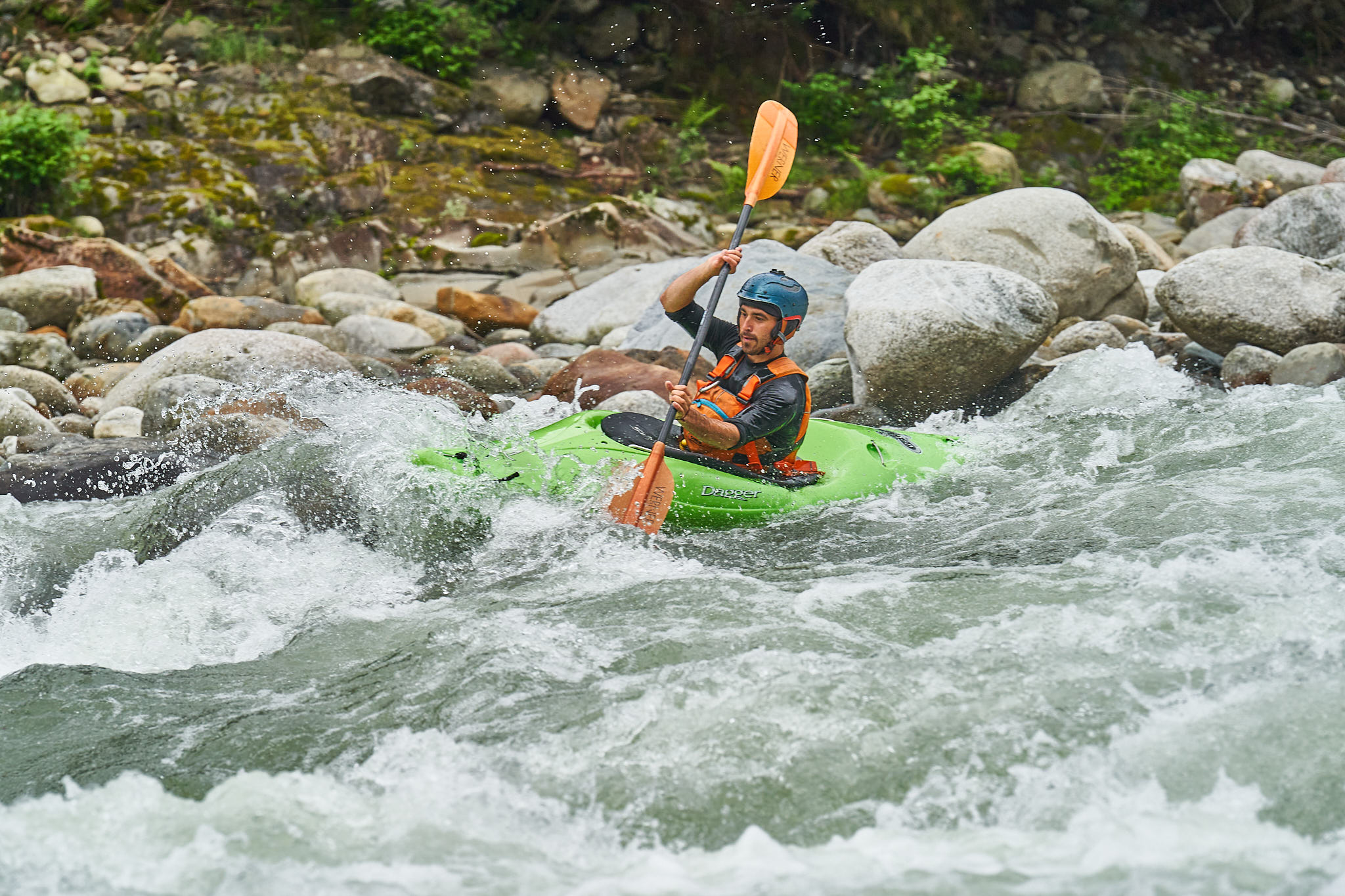
FISHING AND RIVER SPORTS
Situated astride the river Sesia, the town of Piode offers river sports enthusiasts endless outdoor possibilities, starting with sport fishing. This stretch features the “Piode Reserve”, rich in fish and covering 7 km between Campertogno and Pila. Fly-fishing is practised here, an activity regulated by the Valsesian Sport Fishermen’s Society, which applies the obligation to catch and release, with the possibility of retaining only one fish as a trophy.
Rafting and kayaking are frequently practised in this area, while the Sorba stream is the perfect setting for canyoning.
Don’t miss in this area
Discover the wonders of Upper Valsesia
Art and culture, ancient traditions, food and wine excellence and many outdoor activities: let Valsesia win you over!
Pila
Description:

Mentioned for the first time in a document dating back to 1217, Pila is one of the smallest villages in Valsesia. Simplicity, conservation and echoes of past life make the area a site worth visiting and admiring, knowing that you will always find something new to remember.
THE TOWN OF PILA
Its name is said to derive from the Latin “pila”, which refers to mountain gorges.
The historical village centre is characterised by many typical houses built in wood and stone, with loggias and pretty fireplaces. Pila has two hamlets: Lower Filungo and Micciolo.
The medieval bridge near the village centre is particularly interesting. In the past it served to divide the French Empire and the Cisalpine Republic. The parish church of St. Peter, the church of St. Anthony and the oratory of St. Catherine are places of considerable artistic and cultural interest as they contain several frescoes dating back to the late 15th and 17th centuries.


TREKKING & MTB
The area surrounding the town of Pila is rich in trails and walks that offer visitors beautiful views of the valley.
The path connecting the small hamlets can be travelled all year round. It gives the opportunity to proceed towards the ascent of Mount Ovago (1,754 m), Mount Castello (1,806 m) and the Ometto Summit (1,912 m).
The Valsesia cycle/pedestrian path passes through Pila, counting over 100 km of trails in the midst of nature, through woods and pastures, up to an altitude of 3,000 m above sea level on Mount Rosa.
Don’t miss in this area
Discover the wonders of Upper Valsesia
Art and culture, ancient traditions, food and wine excellence and many outdoor activities: let Valsesia win you over!
Scopello
Description:

Surrounded by high peaks and located in the centre of a wide basin dominated by the river Sesia, the village of Scopello is one of the most important tourist centres in the mid-valley area.
THE TOWN OF SCOPELLO
Is the ideal place to spend a family holiday enjoying outdoor activities. It has an excellent range of accommodation facilities. The town offers countless opportunities for outdoor activities in any season, from trekking and water sports in summer to snowshoeing and skiing in winter.
In ancient times, it established itself as an important mining centre, where various metals from mines throughout the valley were processed. Today, the only evidence of the land-based complex is the tall chimney located in the Genziana area.
The parish church, built in the 16th century, is dedicated to St. Mary of the Assumption. Valuable wooden works of art and a Mascioni organ from the early 20th century can be found inside.


THE MERA ALPINE PASTURE
From the town of Scopello, you can easily reach the Mera alpine pasture on foot, by chairlift or by car. It is a charming and sunny destination, ideal for spending pleasant days in the open air with a fantastic view of Mount Rosa. In summer, a few steps away from the arrival station of the Mera chairlift, the little explorers of Valsesia will enjoy visiting a real fun village built with wooden structures. It is the perfect park for those seeking play, nature and relaxation in summer, and a great choice for those who want to enjoy the mountains in winter even without skiing. For skiers, the Mera alpine pasture offers slopes designed on gentle ridges suitable for everybody, especially for families who prefer easy, fun skiing.
The Mera alpine pasture is also home to the Chapel of Our Lady of the Snow, built by shepherds to protect the area from wolves.
Don’t miss in this area
Discover the wonders of Upper Valsesia
Art and culture, ancient traditions, food and wine excellence and many outdoor activities: let Valsesia win you over!
Scopa
Description:

Rich in fairs and traditional events, Scopa is a mountain village that has witnessed singular historical events, such as the passage of the heretic Dolcino.
THE TOWN OF SCOPA
The origins of Scopa are ancient. Traces can be found in official documents dating back to the Middle Ages, more precisely in the Citizen’s Oath of Vercelli in 1217. Scopa has four hamlets: Muro, Ramello, Salterana and Scopetta. The latter is home to the popular Christmas markets, which attract the curiosity of tourists and residents every year.
The Church of St. Bartholomew, patron saint of the town of Scopa, is one of the oldest in Valsesia. The heart and baptismal centre of all churches in the High Valley, it maintained its role until 1558. The church has a 14th century chapel where legend has it that a group of Valsesians gathered to organise the armed persecution of Fra Dolcino, a friar accused of heresy and executed in 1307. However, several historical sources have disproved this narrative.
Walking through the streets of the village centre, you can spot numerous washhouses, symbols of a bygone daily life. In addition, the prisons, the old oven and the icehouse are still visible. On the top floor of the Town Hall, you can visit the permanent Ethnographic Exhibition of the Scopa Community.


OUTDOOR AND ART TRAILS
The town of Scopa is surrounded by several peaks, including Mount Ventolaro (1,835 m), Mombarone (2,043 m) and the Gavala Teeth (1,676 m).
The area is rich in trails suitable for all levels of fitness, including one of the enchanting “Art Trails” connecting Scopa to Piani Alti. The itinerary, which can be travelled all year round, is dotted with numerous chapels and oratories of considerable artistic interest.
For mountain bike enthusiasts, the stretch of cycle path from Scopa to Riva Valdobbia is a must. Easy to ride and full of breathtaking views, the route is also equipped with several devices that are part of a “fitness trail”.
Don’t miss in this area
Discover the wonders of Upper Valsesia
Art and culture, ancient traditions, food and wine excellence and many outdoor activities: let Valsesia win you over!
Balmuccia
Description:

At the exact point where the waters of the Sesia meet the waters of the Sermenza stream lies the town of Balmuccia, a characteristic hamlet surrounded by mountains.
THE TOWN OF BALMUCCIA
The name Balmuccia derives from the Latin “piccola balma”. It is the village that opens the doors to the Sermenza Valley.
In the centre of the village is the parish church of St. Margaret, built in the 16th century. Adjacent to the church is the Ossuary Chapel, decorated with pictures and striking frescoes.
In 1877, the society “Dilettanti filodrammatici di Balmuccia” (Dramatic amateurs of Balmuccia) started construction works on the Social Theatre, which was highly successful until after World War II with theatrical performances that witnessed a continuous increase in audience. Closed in the 1960s, it reopened in 2008 as a result of the local population’s interest.


THE VALSESIA SUPER VOLCANO
The Valsesia Super Volcano, located in an area from Balmuccia to Prato Sesia, was active 290 million years ago. It was discovered during research conducted by some geologists, notably Silvano Singoi of the University of Trieste and James Quick of the University of Dallas.
Research since the 1980s shows that a super volcano with 13 km diameter was present in these territories during the Palaeozoic. According to the data found, its internal structure should still be intact and is estimated to be as deep as 25 km. The deepest part of the super volcano can be seen particularly in Balmuccia.
Don’t miss in this area
Discover the wonders of Upper Valsesia
Art and culture, ancient traditions, food and wine excellence and many outdoor activities: let Valsesia win you over!
Carcoforo
Description:

Voted “Italy’s Ideal Village” by the Airone magazine in 1991, Carcoforo is an enchanting village located in the Egua Valley, a small valley off the Sermenza Valley.
THE TOWN OF CARCOFORO
Nestled between mountain peaks and beautifully set among larch woods, Carcoforo is a small village rich in history and culture.
The origin of the name is German, and goes back to the ancient settlements of the Walser people. This is confirmed by the characteristic stone and wood architecture in the town centre. Unfortunately, several buildings that were part of the old architectural heritage were swept away first by the flood of 1775 and then by a fire in 1863
Walking through the streets of the town, one can admire numerous sundials and small frescoes on the walls of the houses. One example is the beautiful fresco by Eugenio Rappa on Casa Cantore.
The parish church dedicated to the Holy Cross dates back to 1635 and is located in the centre of the square surrounded by old buildings. There are valuable and important works of art and furniture inside.


THE NATURAL HISTORY MUSEUM OF THE HIGH VALSESIA NATURE PARK
The territory of the municipality of Carcoforo is partly included within the High Valsesia Nature Park. The town is surrounded by high mountain ranges that, among the main peaks, include the 2,802 m Pizzo Quarazzolo and the 2,789 m Pizzo Montevecchio.
The High Valsesia Natural History Museum of the Nature Park is in the hamlet of Tetto Minocco. This old Walser dwelling is used as a museum with a didactic part where you can learn more about the local culture. Carcoforo is one of the hubs of the Valsesia Ecomuseum distributed in various locations in the valley.
Don’t miss in this area
Discover the wonders of Upper Valsesia
Art and culture, ancient traditions, food and wine excellence and many outdoor activities: let Valsesia win you over!
Rima – Alto Sermenza
Description:
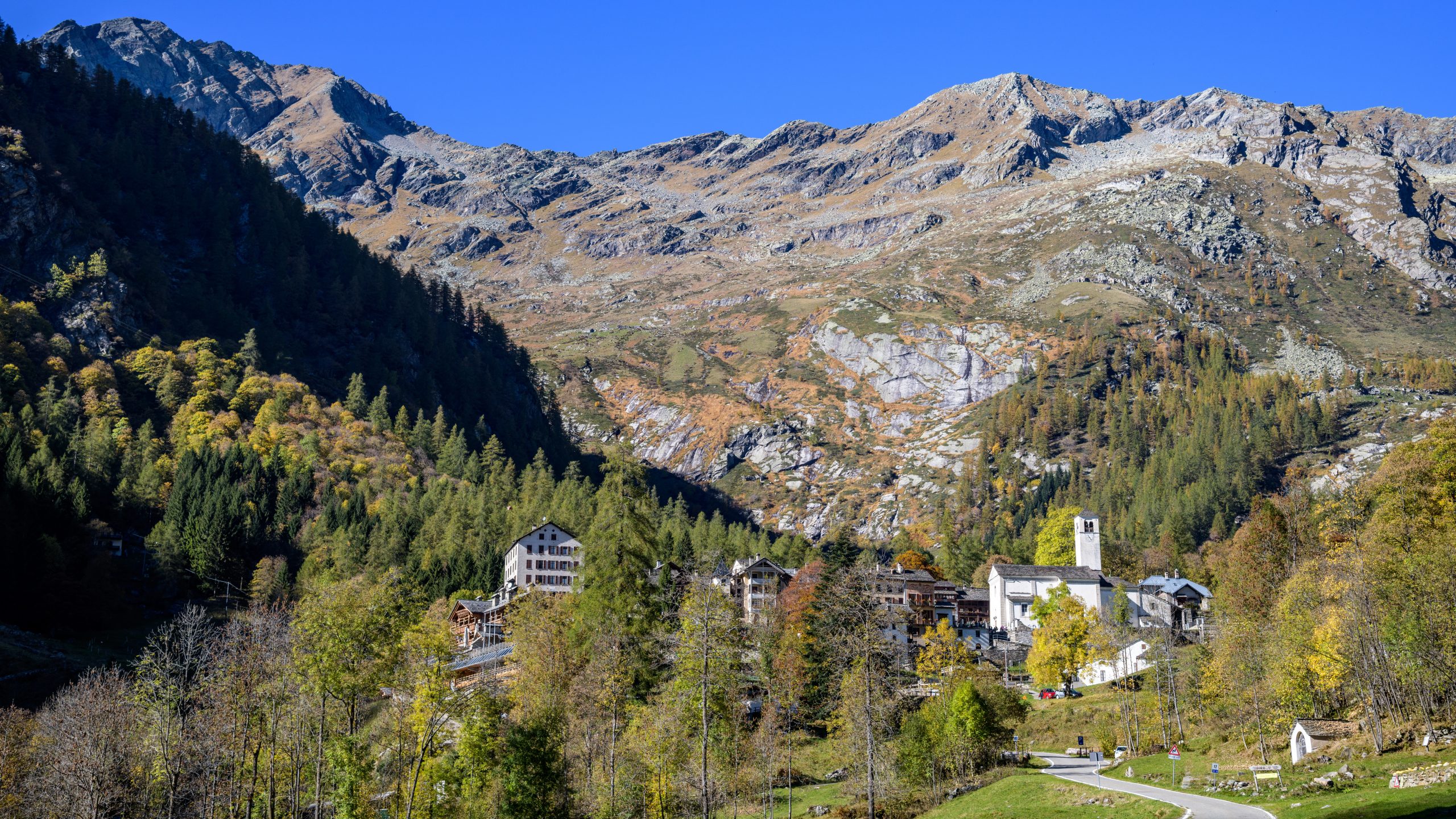
A Walser settlement and the highest inhabited place in Valsesia, Rima is a small village surrounded by a magnificent mountain amphitheatre at the foot of Mount Tagliaferro.
THE TOWN OF RIMA
The town of Rima has been part of the municipality of High Sermenza together with Rimasco since 2018. It is a small tourist resort, located in a green basin at the top of the Sermenza Valley, with much of the surrounding area protected by the High Valsesia Nature Park.
At an altitude of 1,417 m, Rima is the highest town in Valsesia, and boasts great historical and cultural importance. This small village nestled between the bare rocks of the mountains was founded in the 14th century by the Walser people. Traces of this past are still clearly visible today as you stroll through the streets of the old town centre
The parish church dedicated to St. John the Baptist erected in the 17th century preserves valuable furnishings and wooden sculptures of remarkable importance and beauty.

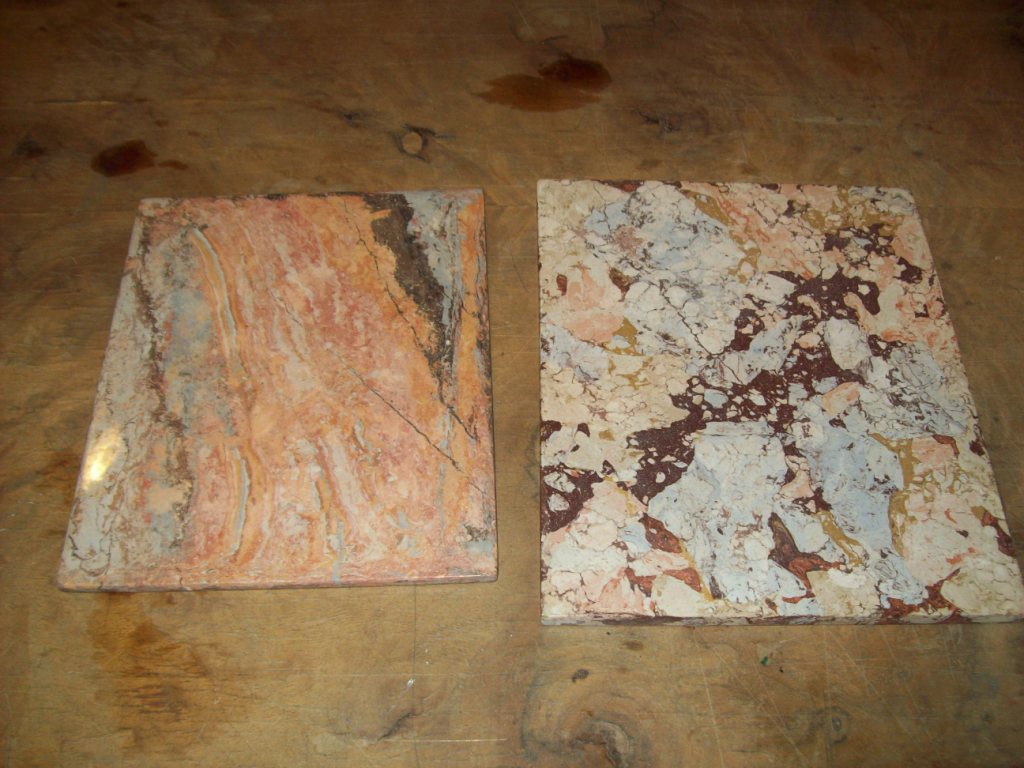
ART AND CULTURE IN RIMA
This area still preserves an ancient decorative art that made the inhabitants of Rima famous throughout the world in the 19th century, precisely artificial marble. By participating in one of the workshops held at the Rima Artificial Marble Museum, you can learn the secrets of this excellent craft that was once handed down exclusively from father to son.
After a visit to the Pietro della Vedova Plaster Library, which exhibits more than two hundred works by the Valsesian artist, a visit to the beautiful Rima basin is a must, following one of the many itineraries that wind their way through the High Valsesia Nature Park.
Don’t miss in this area
Discover the wonders of Upper Valsesia
Art and culture, ancient traditions, food and wine excellence and many outdoor activities: let Valsesia win you over!
Rimasco – Alto Sermenza
Description:

Incorporated in 2018 into the High Sermenza municipality formed from the union with Rima San Giuseppe, Rimasco is a picturesque alpine village overlooking an artificial lake.
THE TOWN OF RIMASCO
Was founded in 1479 when it broke away from the parish of Boccioleto. This small village lies on the shores of an artificial lake created following the construction of a dam downstream of the village in 1925 in order to increase electricity production.
Rimasco is well known as a holiday resort and for the traditional Miaccia Fair held every year on 16 August. Near the hamlet of Dorca you can admire some typical Walser dwellings confirming the presence of settlers in these areas from 1300 onwards.
The parish church of St. James has ancient origins but was remodelled several times until 1688, when it acquired its present appearance. Many Baroque wooden works and frescoes are preserved inside.

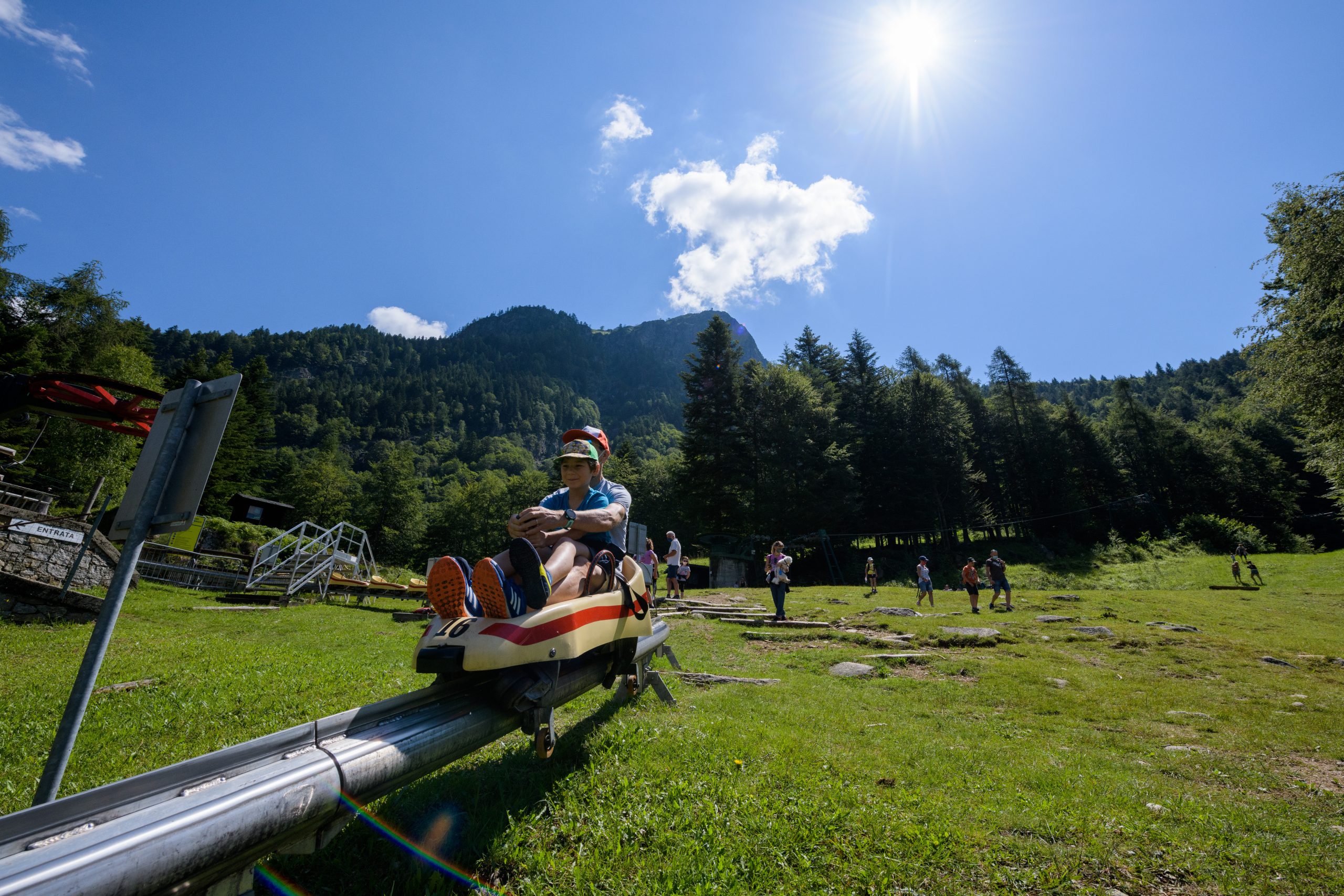
SPORTS IN RIMASCO
Various sports activities can be practised around Rimasco. In summer, the rich network of footpaths surrounding the village offers numerous hiking opportunities for trekkers. To enjoy a beautiful view of the village of Rimasco, we recommend reaching the Vallè Piat alpine pasture by following Trail 363.
A summer alternative for everyone is the adrenaline-fuelled fun bobsleigh on rails in the redeveloped former Rimasco ski resort. The track is 1.8 km long with a difference in altitude of 220 m. It is ideal for a fun-filled day.
In winter, the peaks that embrace the village lend themselves to snowshoeing and ski mountaineering excursions.
Don’t miss in this area
Discover the wonders of Upper Valsesia
Art and culture, ancient traditions, food and wine excellence and many outdoor activities: let Valsesia win you over!
Rossa
Description:

Situated in a particularly favourable and sunny location, Rossa is a small mountain village with an exceptional view of the Sermenza Valley.
THE TOWN OF ROSSA
With its southern exposure, the village of Rossa enjoys a very fortunate position as it is kissed by the sun practically all year round. Joined to the municipality of Boccioleto since ancient times, Rossa gained its independence in the 17th century. The village develops vertically, and most of its attractions can be accessed via steep staircases. It comprises six hamlets: Piana, Rainero, Ca’ dei Bianchi, Salerio, Folecchio and Cerva.
The parish church dedicated to St. Mary of the Assumption stands in the centre of the village with a 30 m bell tower dating back to the 15th century, and rebuilt in the 19th century
Eleven oratories preserve and contain numerous works by local artists. Several 17th century mills, formerly used for grain processing, can be seen along the course of the Cavaione stream.
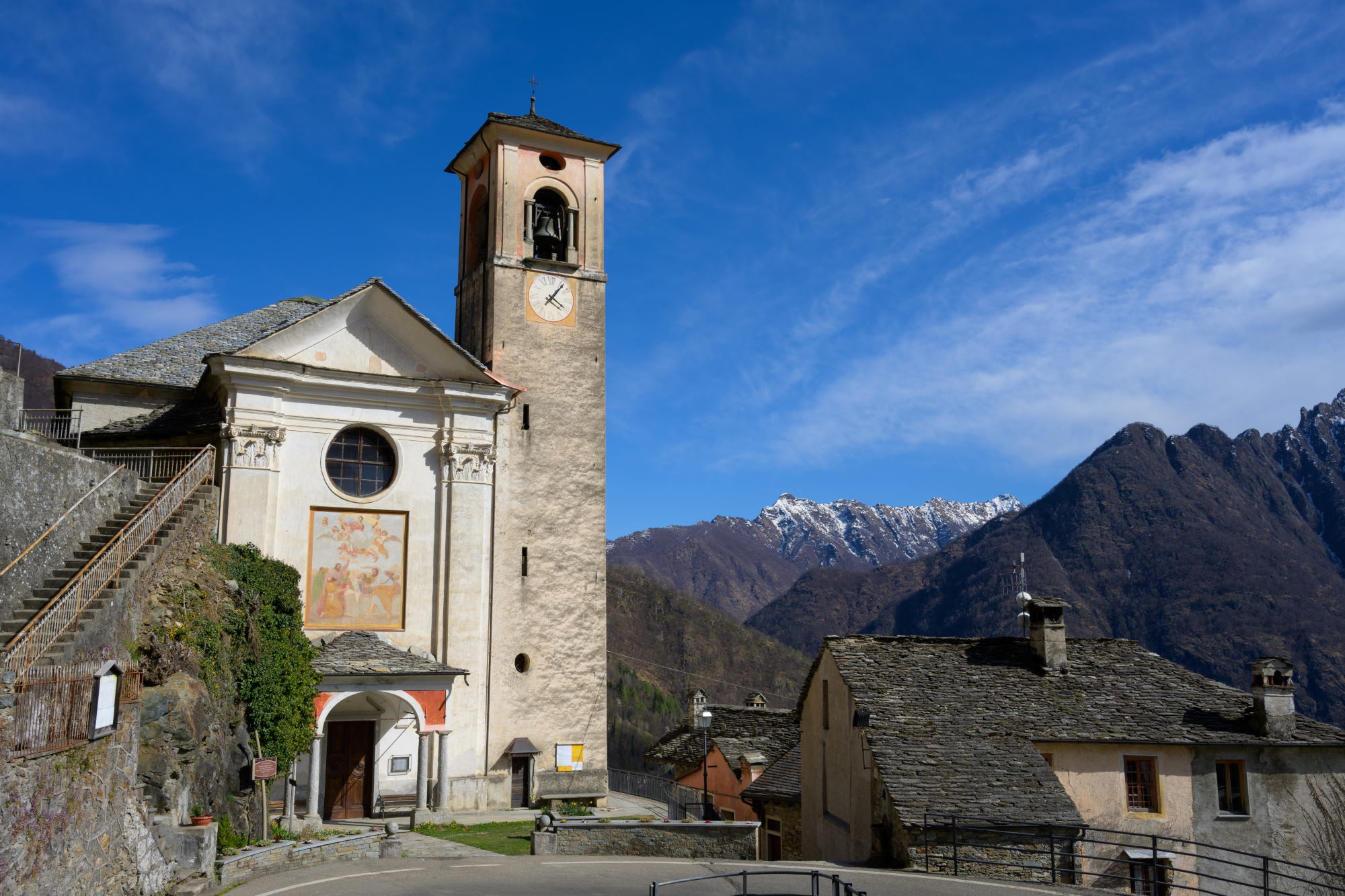

nicolao sottile
The village of Rossa is known for being the birthplace of Canon Nicolao Sottile, a personality linked to the construction of the hospice that bears his name. His work “Quadro della Valsesia” collects and explains in detail the harsh living conditions of valley dwellers of the time. He later became parish priest of Valduggia, obtaining the title of canon in 1793.
Following the itineraries around the village of Rossa means getting lost in the lush nature of forests and mountain pastures. Of particular note is one of the eight Valsesia Art Trails, which leads from Rossa, in a loop of around 11 km, to the alpine pasture Alpe Sull’Oro, revealing several hamlets and characteristic alpine pastures rich in works of art.
Don’t miss in this area
Discover the wonders of Upper Valsesia
Art and culture, ancient traditions, food and wine excellence and many outdoor activities: let Valsesia win you over!
Boccioleto
Description:

Boccioleto is a municipality located in the Sermenza Valley, the side valley of Valsesia. Bathed by the Sermenza and Cavaione streams, it is a peculiar mountain village, an ideal destination for those who want to combine art and nature, history and local traditions in the typical atmosphere of the ancient Valsesian villages.
THE TOWN OF BOCCIOLETO
Nestled in the mountains of the Sermenza Valley, Boccioleto is a small village founded in ancient times. The municipality of Boccioleto has numerous hamlets, including: Oro, Ronchi, Oromezzano, Solivo, Casetti, Piaggiogna, Palancato and Fervento.
The village is dominated by the Pievana Parish Church, dedicated to Saints Peter and Paul. It contains frescoes, wooden sculptures and paintings by Ernesto Lancia, an artist from Boccioleto.
Boccioleto was the birthplace of Giacomaccio (Giacomo Preti), who led a popular revolt against the people of Varallo in 1518 and the General Council of the valley.


THE GIAVINE TOWER
The Giavine Tower, also known as the “Boccioleto Tower”, is a massive gneiss spire that stands out above the village, and has become its unmistakable symbol over the years.
From base to summit, it is 90 m in height, and a popular summit for many sport climbing enthusiasts.
The Giavine Tower can be reached from the hamlet of St. Mark and the hamlet of Ronchi by following Trail 386.
Don’t miss in this area
Discover the wonders of Upper Valsesia
Art and culture, ancient traditions, food and wine excellence and many outdoor activities: let Valsesia win you over!
Rimella
Description:

Founded in the 13th century, Rimella is located in the Mastallone Valley and, together with Alagna, it is one of the oldest Walser settlements in Valsesia.
THE VILLAGE OF RIMELLA
The village, located at the head of a narrow valley that branches off from the Mastallone Valley, consists of several hamlets arranged in terraces along the mountain slopes. The surrounding landscape has morphological features typical of ice and water erosion. The site presents a stunning view of the Ossola valleys and Lakes Orta and Maggiore.
The parish church of St. Michael the Archangel, with its imposing dimensions and built in the mid-18th century, is located in the centre of the village. It is one of the most important religious buildings in the entire Valsesia area.
Rimella is a popular destination for trekking enthusiasts. In fact, several hiking trails start from the village, allowing you to discover the High Valsesia Nature Park. The municipality is part of this park.


MUST SEE MUSEUMS
Rimella has a strong cultural identity stemming from its Walser origins. In fact, the village was founded by the Walser people in the 13th century, and still retains the local language of German origin, Tittschu.
In the hamlet of Sella, you will find the Walser Museum where you can learn more about the customs and traditions of the Germanic people. The interesting Giovanni Battista Filippa Anthropological Museum, set up during the 19th century in an old house dating back to 1415, is near the parish church. It preserves animals, minerals and historical books documenting the customs of the people of the valley.
Don’t miss
in this area
Discover the wonders of the Mastallone Valley
Art and culture, nature, ancient traditions, food and wine excellence and outdoor activities: let the Mastallone Valley win you over!
Fobello
Description:

Known for being the birthplace of Vincenzo Lancia, founder of the namesake car manufacturing firm, Fobello is a picturesque village located in the High Valsesia Nature Park.
THE TOWN OF FOBELLO
Fobello is a characteristic Valsesian village rich in history and culture, located at 880 m in the High Mastallone Valley. Awarded the Orange Flag by the Italian Touring Club, it consists of 23 hamlets. Due to the beauty and richness of its woods, the area is called the Emerald Basin, and is included in the High Valsesia Nature Park.
In the area, you can admire some beautiful villas, such as Villa Musy, Villa Lancia and Villa Lanza, evidence of the elite tourism that transformed the village of Fobello into a renowned holiday resort in the last century.
The parish church dedicated to St. James was erected in 1545. Destroyed on two occasions by the flooding of the Mastallone river, it was rebuilt in 1931.


MUSEUMS IN FOBELLO
The village of Fobello is home to several interesting museums. The “Puncetto Valsesiano” Museum, the ancient ornamental lace typical of the valley, where you can admire a large display of lace, clothing, and objects relating to the history of Fobello Costume; the “Vincenzo Lancia” permanent exhibition, named after the founder of the Turin-based car manufacturer, which brings together documents, photographs, newspapers and objects tracing the life of the illustrious man from Fobello and Lancia; the Carestia-Tirozzo Museum, which houses a vast collection of the herbarium that belonged to Abbot Carestia, one of Italy’s greatest botanists, a native of Riva Valdobbia.
Don’t miss in this area
Discover the wonders of the Mastallone Valley
Art and culture, nature, ancient traditions, food and wine excellence and outdoor activities: let the Mastallone Valley win you over!
Cervatto
Description:

A holiday destination for residents of Piedmont and Lombardy in the 19th century, Cervatto is a charming village that nestles in the green Mastallone Valley.
THE TOWN OF CERVATTO
Located at an altitude of 1044 m, Cervatto is a small tourist centre with a privileged scenic position overlooking the Mastallone Valley and the Cervo Valley. In 1738, the parish of Cervatto separated from that of Fobello, and became a municipality about a century later. Today Cervatto counts seven pretty hamlets: Cadvilli, Cadiano, Giavina, Orlino, Oro Negro and Tamponaccio.
Not far from the village centre, which gathers around the main square, stands the villa known as “The Castle”, which was built in the late 19th century at the behest of the Montaldo family.
Hiking is practised in Cervatto throughout the year, and one of the most fascinating itineraries is the Art Trail dotted with oratories and chapels that leads to the Madonna del Balmone.


THE PARISH CHURCH OF ST. ROCHUS
Erected in 1738, the parish church of St. Rochus preserves valuable works of art by various Valsesian artists, including a magnificent painting by Giuseppe De Dominici depicting the death of St. Joseph.
Following the path at the back of the church, you can observe the chapels of the Stations of the Cross, meticulously painted from 1775 onwards by Giovanni Battista Peracino di Cellio, leading to the Oratory of St. John the Baptist.
Don’t miss in this area
Discover the wonders of the Mastallone Valley
Art and culture, nature, ancient traditions, food and wine excellence and outdoor activities: let the Mastallone Valley win you over!
Cravagliana
Description:

Located in the Mastallone Valley, Cravagliana is a typical mountain village that conceals very ancient origins.
THE TOWN OF CRAVAGLIANA
The name derives from Latin, and indicates the rocky cracks that characterise the territory adjacent to the village. The municipality of Cravagliana has numerous hamlets: Casone, Giavinali, Canera, Molino, Nosuggio, Grassura, Pianaronda, Roncaccio, Upper and Lower Sassello, Ordovago, Meula, Ferrera, Saliceto, Voi, Gula, Dietro la Sella, Upper and Lower Valbella, Brugaro, Brugarolo, Selva, Bocciolaro and Colla
The parish church is dedicated to St. Mary of the Assumption and to St. Stephen. It is the oldest church in the area, as reported by several studies that mention it as early as the 13th century. Externally it is frescoed with a large painting of St. Christopher, and inside there are numerous carved wooden works dating back to the 17th century.
The Sanctuary of the Tizzone, which can be reached via a mule track and is surrounded by a beautiful chestnut wood, is of great artistic interest.
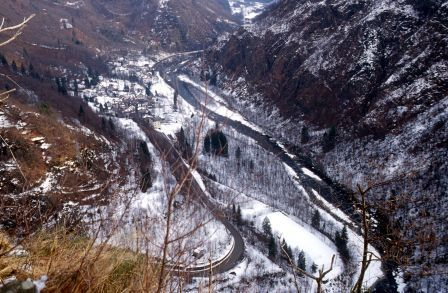

A TOWN WITH CURIOUS DETAILS
The village of Cravagliana is known for being the birthplace of Giovanni Battista Lorenzo Bogino (1701 – 1784), politician and Minister for Affairs at the Court of Charles Emmanuel III, and of Giacomo Ginotti (1845 – 1897), an important Valsesian sculptor known in the most famous Italian and European courts of the time.
In the 18th century, there was a well-developed circuit of mines for ironworking that was exploited until the early 20th century.
The village of Cravagliana, with its numerous hamlets that extend up to the high alpine pastures is among the largest in Valsesia.
Don’t miss in this area
Discover the wonders of the Mastallone Valley
Art and culture, nature, ancient traditions, food and wine excellence and outdoor activities: let the Mastallone Valley win you over!
Varallo
Description:

Ancient palaces, museums and churches that are genuine treasure troves of art, a charming old town characterised by traditional districts and a magnificent Sacro Monte – Unesco World Heritage Site: come and discover Varallo!
SACRO MONTE – UNESCO HERITAGE
Varallo is home to the oldest (1491) Sacro Monte in northern Italy and a UNESCO heritage site since 2003. Conceived and commissioned by Milanese Franciscan Friar Bernardino Caimi as a model of the holy places of Palestine, it consists of 44 frescoed chapels and a basilica, beautifully immersed in the vegetation of a nature park. The tour winds its way along streets and small squares, enriched by chapels with more than 4,000 frescoed figures and about 800 statues depicting scenes from the Gospels, produced by local artists and craftsmen, such as Gaudenzio Ferrari, Giovanni d’Enrico, Antonio d’Enrico (called Tanzio or Tanzio da Varallo), Tabacchetti and Francesco Mazzucchetti (called Morazzone).
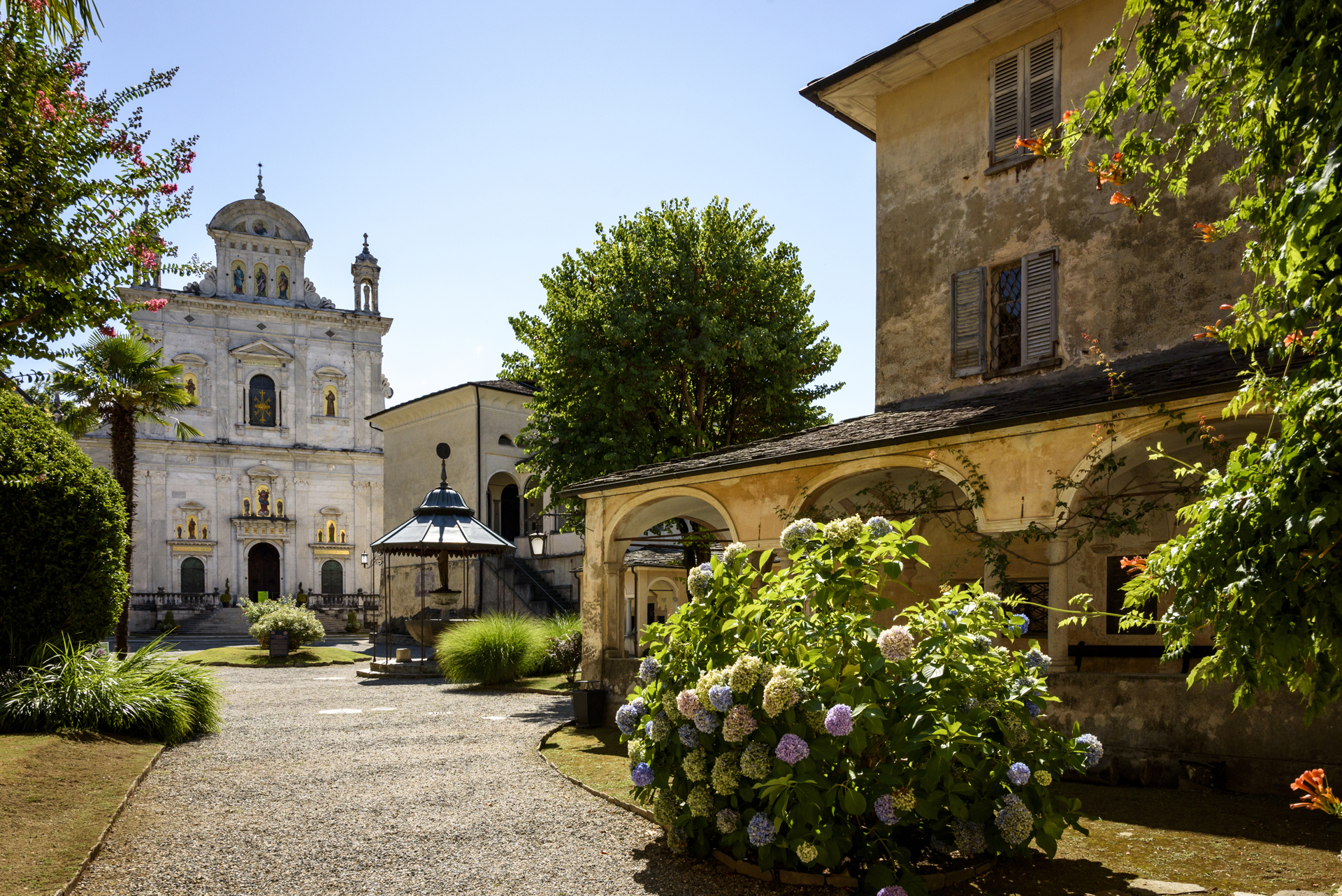

GAUDENZIO FERRARI, WARAL ART AND THE DISTRICTS OF THE HISTORICAL CENTRE
When admiring the artistic masterpieces of Varallo, one cannot fail to mention Gaudenzio Ferrari. The works of the artist and his students can be found in the city’s churches, at Sacro Monte and in the Varallo Picture Gallery. Contemporary art has also found its place in Varallo thanks to the WARAL Art Urban Project, which enriched the city centre with artistic murals in an ideal dialogue with the rich cultural tradition of the place. A tradition that can be admired in the historic districts that make up the old town centre characterised by narrow alleys with views of architecture with shops, loggias, courtyards and old historic houses.
CRAFTS, FOOD AND WINE, AND SPORTS
The Crafts Shop is the place for typical handicrafts of Valsesia: from puncetto, a unique lace, to scapin, typical valley slippers, to wood carving and ollar stone objects. The typical gastronomy is born from the convergence of tastes and flavours of the surrounding territories, such as rice of the Lower Vercelli area, wine of the Gattinara lands and dairy products of Valsesia, among which the delicious alpine cheeses stand out. Outdoor enthusiasts will find fertile ground in the Varallo area for their passions, from trekking to mountain biking to more adrenaline-fuelled activities, such as river sports and climbing.

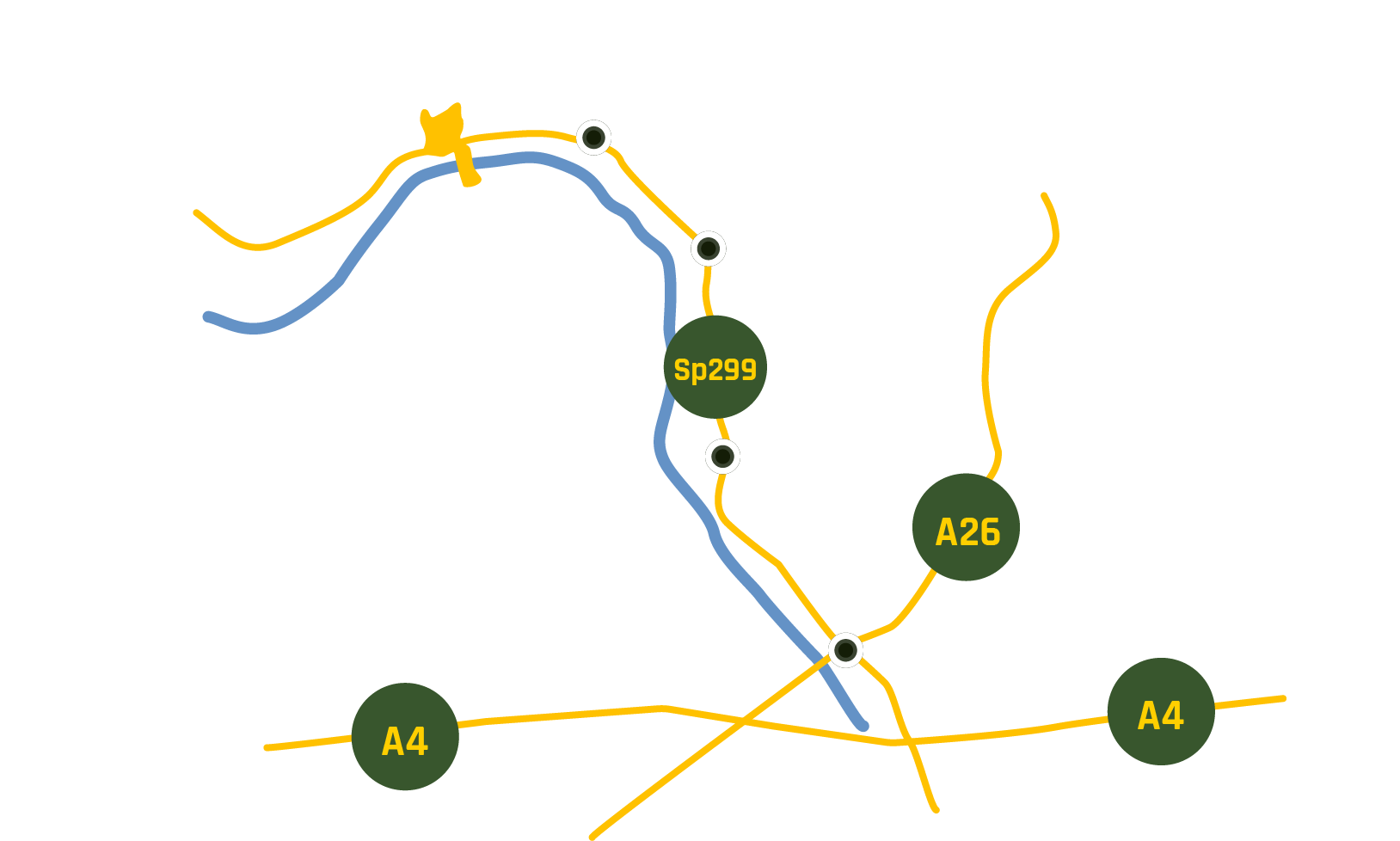
HOW TO GET TO VARALLO SESIA
BY HIGHWAY
A4 Milan-Turin A26 junction at Biandrate, direction Gravellona Toce, for Romagnano-Ghemme. From Romagnano Sesia follow SP 299 to Varallo-Alagna Valsesia.
A26 Genoa-Gravellona Toce, exit Romagnano-Ghemme.
From Romagnano Sesia follow the SP 299 for Varallo-Alagna Valsesia
BY BUS
Daily bus lines connect Varallo with Milan, Turin, Vercelli, Novara, Biella
Don’t miss in this area
Discover the wonders of Varallo
Art and culture, nature, ancient traditions, food and wine excellence and outdoor activities: let Varallo win you over!
Civiasco
Description:

The village of Civiasco, located along the Way of Saint Charles, has been traversed since ancient times by pilgrims and wayfarers on their way from Orta to Varallo via the Colma Pass.
THE TOWN OF CIVIASCO
Situated in a particularly favourable position as it is often sunny, Civiasco divides Valsesia from the valley of Lake Orta, and counts three hamlets: Piandellavalle, Campolungo and Machetto
After being almost completely destroyed by fire in 1779, the small village was rebuilt by revisiting the aesthetics and adopting examples of Hispano-Moorish architecture perfectly integrated with the traditional town fabric. The many migrants of the 18th century made their fortune in the Iberian Peninsula, and once back home, they brought with them the new architectural style and pushed the country towards a great building development.
In the town centre you will find the Ercole Durio Civic Museum, named after its 19th century benefactor and collector. Inside the museum you can see numerous artefacts, weapons, furniture and a fantastic specimen of ancient traditional dress. Also nearby is the municipal library with more than 1,200 volumes.
The parish church is dedicated to St. Gotthard and dates back to the 17th century. The Oratory of St. Rochus, on the outskirts of the village, houses an elegant 18th century marble altar.


THE FALCONERA FERRATA
Constructed by mountaineers and the Varallo mountain rescue team in collaboration with the Alagna Alpine Guides, the Falconera Ferrata is an unmissable attraction for sport climbing enthusiasts.
It consists of two routes, precisely the Partusacc, a loop route towards Mount Tovo, and the Falconera, which is more challenging and signposted from Civiasco with Trail 636.
The Falconera Ferrata offers those who undertake it a beautiful view of the entire valley below, and can boast an exceptional record. Indeed, it was the first European ferrata to include a lighting apparatus. Night lighting was inaugurated early in 2020, a feature that now makes it unique in the Italian context.
Don’t miss in this area
Discover the wonders of Alta Valsesia
Art and culture, nature, ancient traditions, food and wine excellence and outdoor activities: let Alta Valsesia win you over!
Quarona
Description:
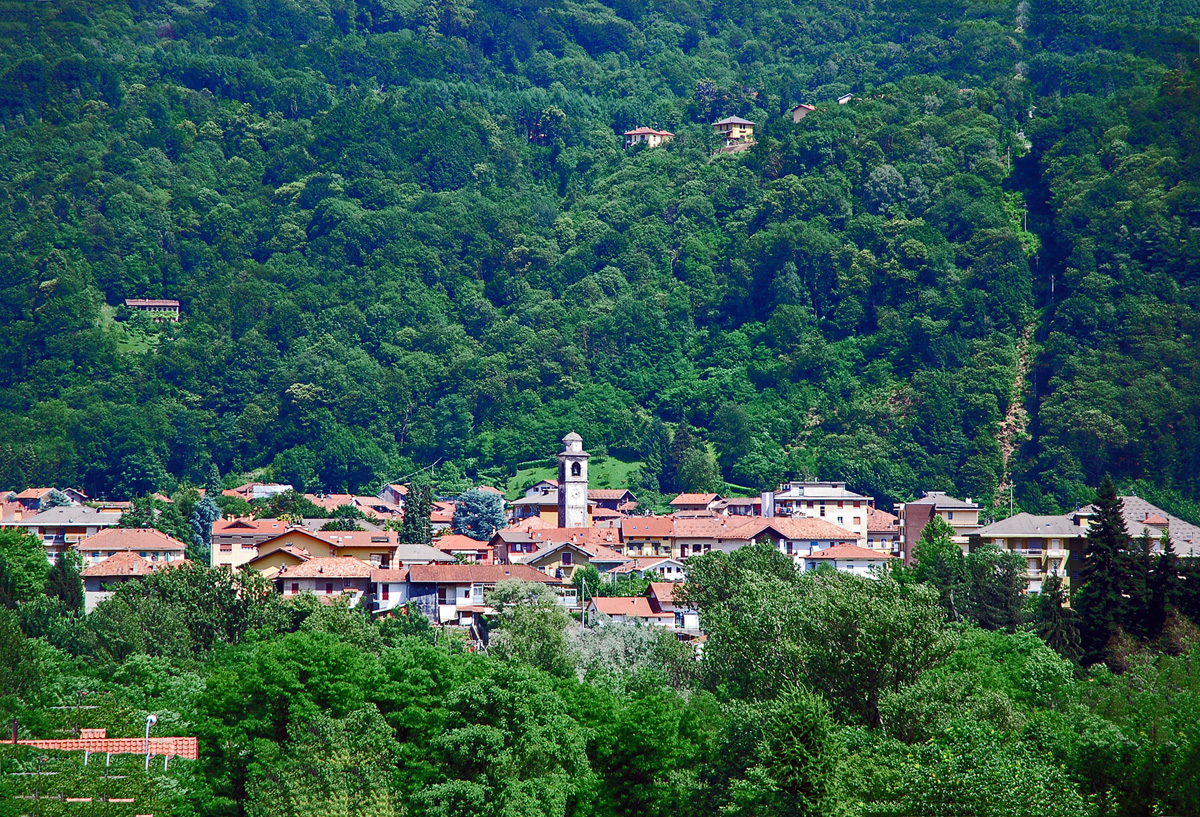
The town of Quarona, with very ancient origins, straddles the Sesia river along a flat area lying on the left bank of the river, while on the right side it climbs up the mountains towards the alpine pastures.
THE TOWN OF QUARONA
The place name Quarona points to a probable pre-Roman descent. The town is rich in churches and monuments that bear witness to its ancient history.
In 1807, the village was divided into several hamlets: Vico, Duomo, Cavaglia sotto, Morondo di Cavaglia, Upper and Lower Valmaggiore, and Doccio.
Among the most important attractions is the Church of San Giovanni al Monte, one of the oldest in Valsesia, which can be reached via a mule track along which several votive chapels can be admired. This awe-inspiring devotional route then connects it to the Sanctuary of the Blessed Panacea al Monte, a legend and a cult of the town. A second shrine dedicated to Panacea is the Church of the Beata al Piano, in the town centre of Quarona.
The 17th century parish church of St. Anthony the Abbot is also located in the town centre, and internally preserves numerous works from the Gaudentian school.
In the late 19th century, the town witnessed the establishment of several companies dedicated to the processing of wool and metal. Quarona is still internationally renowned for its textile production.


QUARONA’S HOLY FRIDAY
Since the 1980s, the Way of the Cross, a re-enactment of the Passion of Christ, has been performed in the municipality of Quarona on Good Friday. The Sacred Representation of Good Friday in Quarona is unique in the province of Vercelli. It was founded in 1982 and has been gaining support each year until it has now become one of the most popular events in the valley.
The scenes performed, which used to be itinerant around the city, have taken place in Silvio Pellico Square from 2019 onwards, then moving up to the area surrounding the Church of San Giovanni al Monte.
Don’t miss in this area
Discover the wonders of Valsesia
Discover the wonders of Valsesia
Cellio con Breia
Description:

Cellio con Breia was established in 2018 as the union of the two municipalities that go by the same name. Surrounded by beautiful mountains and woods, it offers breathtaking views and numerous trails for outdoor sports enthusiasts.
THE TOWN OF CELLIO CON BREIA
It is a typically rural village, surrounded by beautiful woods and with a sublime view of the mountains and Lake Orta. It is also rich in history and typical valley culture. Both the town and its characteristic hamlets, referred to as “the hamlets of the sun”, of which Cellio is the largest, preserve houses of traditional architecture, old mills and presses.
The special feature of Cellio con Breia is the parish church of St. Lawrence, flanked by the highest bell tower in Valsesia (56 m). Inside, the church contains numerous works of art, including paintings by artists Tanzio and Lorenzo Peracino. One of the most interesting buildings worth mentioning is the Oratory of St. James, in the Bosco village, located on ancient transit routes through the woods. Also beautifully frescoed by Peracino is the parish church of St. John the Baptist in Breia.
Every hamlet of Cellio has its own oratory or church. These little jewels of art endow the village with charm and culture.


outdoor and nature
The area surrounding the village of Cellio con Breia, characterised by thick woods and scenic areas, is rich in trails for trekking and mountain bike enthusiasts.
One example is the pleasant walk through the chestnut wood to Mount San Grato, or the more challenging walk to Mount Briasco (1,185 m), from where you can enjoy a magnificent view of Mount Rosa on one side and of Lake Orta on the other.
For fans of mountain bike routes, Cellio offers unforgettable views along the cycle path that includes Varallo – Civiasco – Breia – Cellio – Valduggia, or, ascending towards Mount Briasco, it will entertain you with splendid trails immersed in the lush nature that surrounds the town.
Don’t miss in this area
Discover the wonders of Lower Valsesia
Borgosesia
Description:

The main economic centre of Valsesia and an important commercial crossroads, Borgosesia is a populous municipality located at the foot of Mount Fenera.
THE TOWN OF BORGOSESIA
Many are the testimonies of Borgosesia’s rich historical and artistic past, an example being the parish church dedicated to Saints Peter and Paul, which houses works by Bernardino Lanino and Tanzio da Varallo, and the Sanctuary of St. Ann of Montrigone, located on the top of a hill and to all intents and purposes considered a Sacro Monte. A stroll through the lively streets and squares of the old town centre, which has retained the features of the ancient village, is then a must, followed by a stop in the peaceful Magni Park overlooking the left bank of the Sesia river.
Definitely worth a visit is the Carlo Conti Museum of Archaeology and Palaeontology, which exhibits some of the most interesting prehistoric artefacts found in the caves of Mount Fenera, which can also be reached on foot from Borgosesia via pleasant hikes.
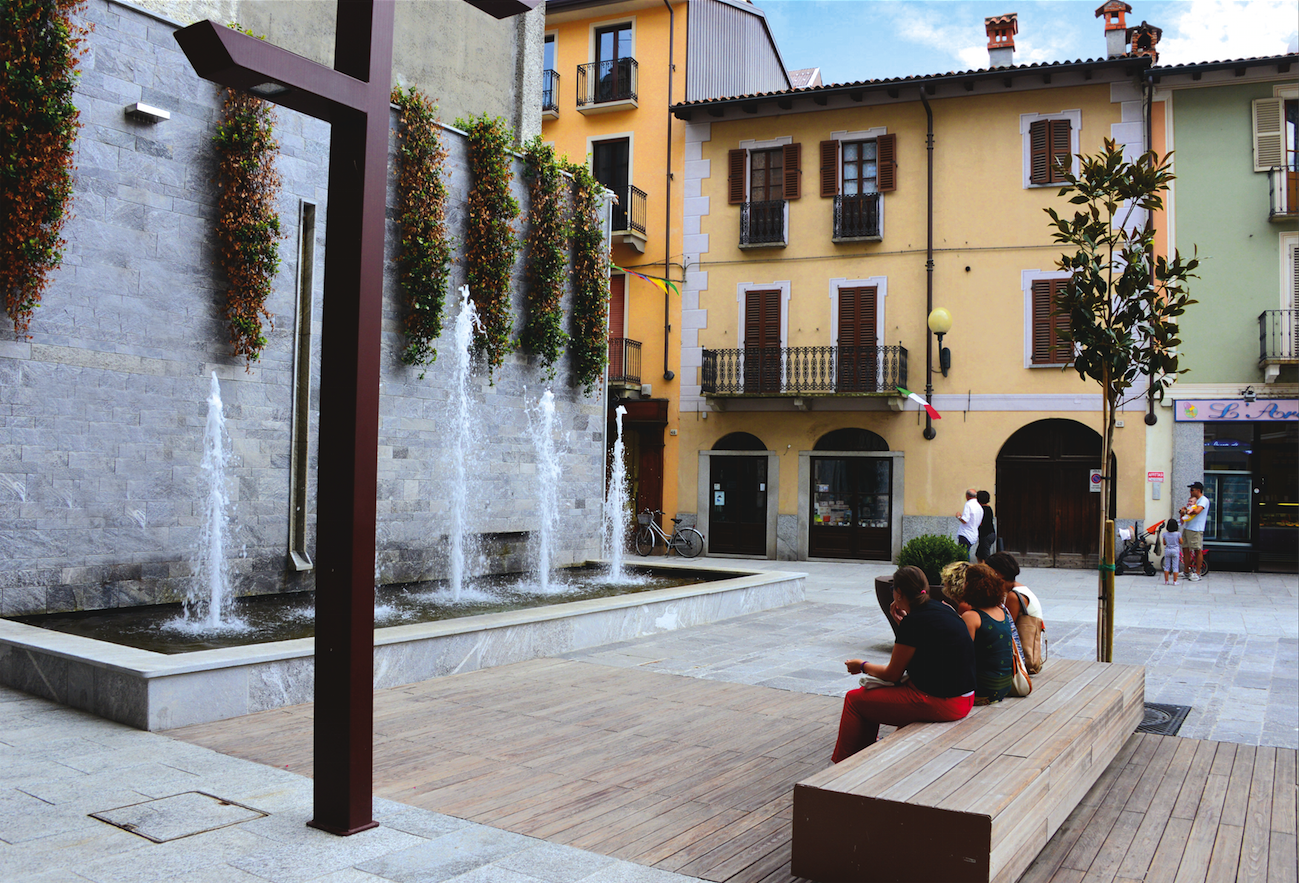

MERCU SCUROT AND CARNEVALE
Borgosesia’s carnival tradition is among the oldest in Valsesia. The traditional masks are the Peru Magunella and the Gin Fiammàa. The Busecca ceremony, held in the town’s main square, kicks off the carnival period dances. Magunopoli, the name Borgosesia takes during carnival time, thus comes alive with events and shows of native tradition
The Mercu Scurot is the true hallmark of the Borgosesia carnival, a transgressive event that is unique in Europe. While all other carnivals end with Shrove Tuesday, the Borgosesian carnival ends on the first day of Lent, to stage a sort of funeral of the carnival itself with a long procession. According to tradition, this event originated during the first official Carnival in 1854. The official uniform of the celebration is also adopted here: a tailcoat, top hat and bow tie (formerly used during funeral processions), complemented by the cassù, a wooden ladle used for drinking the wine distributed along the streets of the town.
Don’t miss in this area
Discover the wonders of Valsesia
Art and culture, nature, ancient traditions, food and wine excellence and outdoor activities: let Valsesia win you over!
Valduggia
Description:

Known for being the birthplace of Gaudenzio Ferrari, Piedmont’s most important Renaissance painter, Valduggia is a pretty little town located close to the Mount Fenera Nature Park.
THE TOWN OF VALDUGGIA
Since ancient times, the town of Valduggia has been an important industrial centre with especially two leading companies, precisely the very old Mazzola Foundry, specialised in the production of bronze bells and whose activity dates back to the early 1400s, and the more recent knitwear factory Maglieria Ragno, established in 1879
Easily connected to Lake Orta via the Cremosina road, the town of Valduggia has always been an important trade route.
The Palazzo Pretorio, in the heart of the city, is the town hall, an eloquent example of 15th century architecture in Valduggia. The parish church is dedicated to St. George and houses valuable frescoes and a triptych from the Gaudentian School inside. The ossuary is situated near the church. The square where the Town Hall and the Parish Church stand is dedicated to Gaudenzio Ferrari, who, according to reliable historical sources, was born in Valduggia. In the Chapel of St. Rochus, one can also admire some frescoes, probably by Ferrari, painted as a thanksgiving to St. Charles for the protection from the plague epidemic from which he and his entire family were saved.


TREKKING IN VALDUGGIA
From the town of Valduggia, following little used secondary roads and paths through splendid beech and chestnut woods, you can reach oases of peace and calm immersed in luxuriant nature.
Among the most beautiful hikes in the area, we recommend the Taragn trail, which leads from Valduggia to the old town of Sorzano. Along the path you can admire some of the last examples of taragn, ancient peasant dwellings with a rye thatched roof and a base of chestnut trunks, typical of Lower Valsesia until the last century.
Don’t miss in this area
Discover the wonders of Valsesia
Art and culture, nature, ancient traditions, food and wine excellence and outdoor activities: let Valsesia win you over!
Postua
Description:

Situated between Valsesia and Valsessera and nestled between the woods and the clear waters of the Strona torrent, Postua is a pretty municipality also known as the “village of nativity scenes”.
THE TOWN OF POSTUA
Lapped by the clear waters of the Strona stream and surrounded by the beech and chestnut woods of the wild Strona Valley, Postua is an enchanting low mountain town that welcomes visitors to a relaxing green oasis with a rich historical and cultural tradition.
The history of Postua originates from the great migratory waves of its inhabitants who, particularly in the 19th century, moved to France and Switzerland. Even today, the French presence in the village is very much felt. The community has maintained strong ties with Postuese families abroad and every year the traditional Postuese Gathering organised by the heirs of migrant families is held in Postua. In summer, many foreign families like to spend their holidays here
The municipality is mainly divided into the hamlets of Roncole, Barinciano, Chiesa, Riva, Fucine and Naulina, all featuring churches and oratories of notable artistic interest. The Sanctuary of Our Lady of Sorrows, one of Postua’s best known and most popular sites, is worth mentioning.


CHRISTMAS CRIBS
During the Christmas period, Postua earns the nickname “town of the Cribs”. This tradition, launched in 1984, attracts many tourists and locals who visit to discover the many cribs in the streets of the town.
The cribs are prepared by residents and placed in the most picturesque places of the area, such as the narrow streets of the old town centres, on the windows of old houses, in gardens, inside churches and chapels, always seeking the most hidden and picturesque corners of each hamlet.
A curious detail: to date, Postua is the Italian village with the highest number of cribs per inhabitant.
Don’t miss in this area
Discover the wonders of Valsesia
Art and culture, nature, ancient traditions, food and wine excellence and outdoor activities: let Valsesia win you over!
Guardabosone
Description:
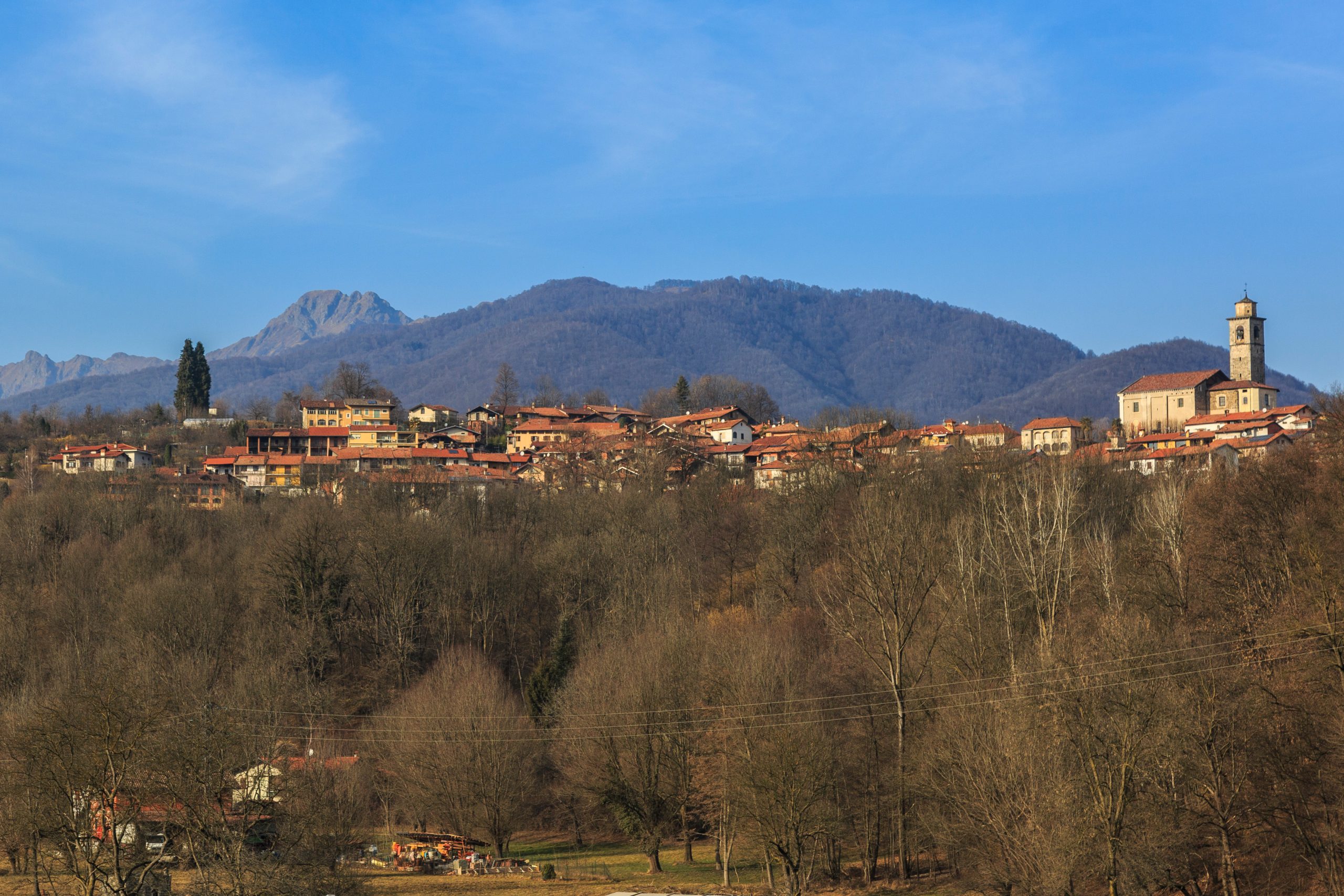
Nestled in the green hills between Valsessera and Valsesia, Guardabosone is a pretty village where you can still breathe in ancient medieval atmospheres.
THE TOWN OF GUARDABOSONE
The town, established around the year 1000, has managed to preserve the typical period architecture as a result of skilful restoration work. Walls, enclosed courtyards, ancient buildings and winding alleys make walking through the medieval centre of the town a pleasant experience.
The parish church is dedicated to St. Agatha and officially obtained parish autonomy in 1626, when it detached from Crevacuore. The Mazzietti sundial, located on the north wall of the church and created in 1880 by Pietro Mazzietti, is of considerable importance. The sundial takes the form of a double clock, where the upper part is a clock that marks the hours according to the canons prevalent in the 19th century, while the lower part is a sundial that marks true noon and mean noon on the meridian of Rome.
A curious detail: Guardabosone is the smallest municipality in the province of Vercelli, and counts about 340 inhabitants.


living museum village
In addition to its architecture, what is surprising about the small village is the presence of numerous interesting museums that have earned Guardabosone the appellation of living museum village.
Museums to visit include the Museum of Ancient Trades, set up in a farmhouse; the Natural Science Museum, which houses numerous fossils, minerals and specimens of stuffed animals; the Museum of Sacred Art and a beautiful botanical garden.
A path also starts from the Oratorio dei Torni and leads to the Church of the Madonna di Loreto, located in a panoramic position on the hill of Luppia. Visiting the ancient medieval village of Guardabosone is a great way to spend a day of art, nature and traditions.
Don’t miss in this area
Discover the wonders of Valsesia
Art and culture, nature, ancient traditions, food and wine excellence and outdoor activities: let Valsesia win you over!
Serravalle Sesia
Description:

Located in a basin just downstream from the confluence of the Sessera and Sesia rivers, Serravalle Sesia is a small town in an area of very ancient settlement at the gateway to Valsesia.
THE TOWN OF SERRAVALLE SESIA
Situated in a mainly flat area on the right bank of the river Sesia, Serravalle Sesia has three hamlets: Bornate, Piane Sesia and Vintebbio. Initially autonomous municipalities, they were later incorporated under Serravalle Sesia from 1927.
he river Sesia has always played a primary role in the area’s economy, as the energy derived from its waters has fed the paper industry for 400 years
Serravalle boasts several of the most interesting religious sites in Lower Valsesia. Two of these enchanting places are: the parish church of Santa Maria di Naula, of Longobard origin, considered the oldest Christian building of worship in Valsesia, and the imposing 11th century Sanctuary of Sant’Euseo, a pilgrim’s target since the 15th century.


A WALK AMONG THE CASTLES
One of the most fascinating places to admire the rice-growing plain framed by the Alps is Vintebbio Castle, which has been resting on top of a hill for over a thousand years, almost as if it were a sentinel to the entire valley. Today, we can admire what remains of the tower and perimeter walls magnificently set in the surrounding vegetation. On dreary spring days the view almost evokes memories of Scotland. The site offers an all-round view of the surrounding villages, the Sesia river and Mount Fenera.
The Serravalle Castle, of Neo-Gothic architecture and built in the 19th century, stands in the highest part of the village. Today the castle displays a collection of ancient art.
Don’t miss in this area
Discover the wonders of Valsesia
Art and culture, nature, ancient traditions, food and wine excellence and outdoor activities: let Valsesia win you over!
Lozzolo
Description:

Situated at the foot of enchanting hills, Lozzolo is a pretty farming village where some fine wines, such as Bramaterra DOC and Coste della Sesia DOC, are produced.
THE TOWN OF LOZZOLO
Together with Roasio, the ancient town of Lozzolo is the place where some fine wines are produced, such as Bramaterra DOC and Coste della Sesia DOC.
The pretty town is dominated by the ancient 13th century castle and the Church of San Giorgio, built in the first half of the 15th century. Just outside the town is the Sanctuary of Our Lady of the Annunciation, rich in frescoes and surrounded by vegetation.
The town is connected by numerous paths, which can be followed on foot or by bicycle, with the neighbouring municipalities. Do not miss the “Light Trail”, a route that winds its way between Lozzolo and Gattinara, offering breathtaking views of woods and vineyards.


THE NEBBIOLO WINE
The extraordinary calling of the hills of Gattinara, Lozzolo and Roasio for Nebbiolo grapevines mainly depends on two factors, precisely a special microclimate favoured by Mount Rosa and a particular subsoil of volcanic origin from the Super Volcano of Valsesia.
Visit a local winery or wine shop for a fascinating tasting experience of excellent wines, and to learn all the secrets of the production of Gattinara DOCG and DOC, Bramaterra DOC and Coste della Sesia DOC.
Don’t miss in this area
Discover the wonders of Gattinara and Baraggia
Art and culture, nature, ancient traditions, food and wine excellence and outdoor activities: let the Lands of Gattinara and Baraggia win you over
Gattinara
Description:

A producer of excellent wines, Gattinara is an ancient town surrounded by rolling hills that offer amazing views of the Vercelli plain and Mount Rosa.
THE TOWN OF GATTINARA
Gattinara is an ancient village, known in Italy and around the world for the namesake fine wine produced here – Gattinara DOCG.
In the old town centre, which has retained its ancient Roman urban layout, there are charming arcades, old shops and elegant 19th century villas. The imposing 15th century Parish Church of St Peter, with its Lombard-Gothic façade, is of particular interest.
To enjoy the unique landscape of the town of Gattinara and the surrounding vineyards, you can reach the hilltop behind the village, the enchanting Castelle Tower with its adjacent Giant Red Bench, the pretty Chapel of Our Lady of the Snow and the ruins of the Castle of St. Lawrence, located at 540 m, at the top of one of the highest hills north of Gattinara.

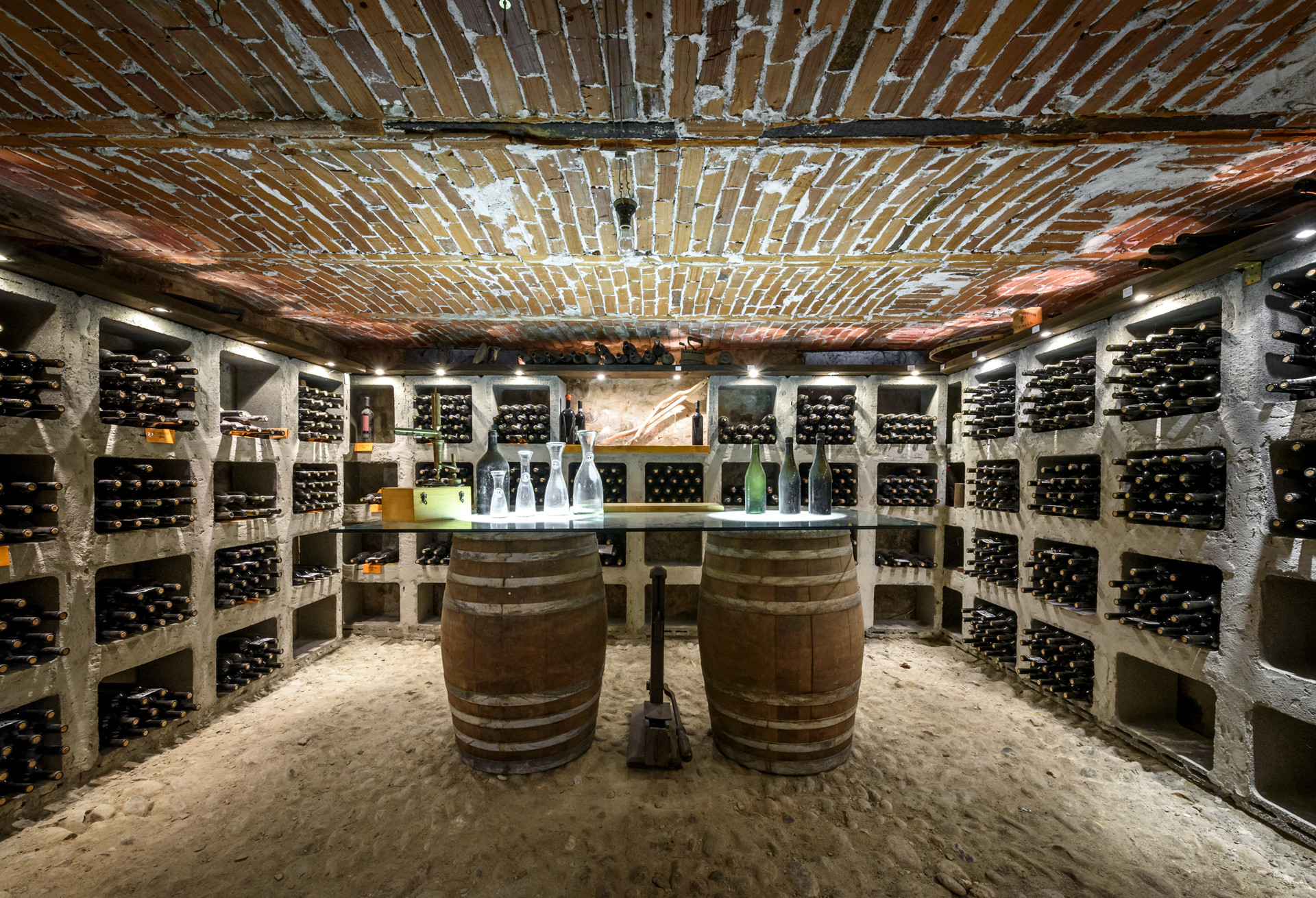
THE REGIONAL WINE SHOP OF GATTINARA
The Regional Wine Shop of Gattinara was established in 1999 to relaunch and protect local wines. It also promotes numerous initiatives to raise awareness of viticulture and the Nebbiolo lands of northern Piedmont. The venue is Villa Paolotti, a 19th century manor house and once the historic wine shop in Gattinara, an ideal place to learn about excellent wines, taste and purchase them. At the villa you can visit the Gattinara Ecomuseum, which collects some interesting objects and tools of rural life in the past.
THE ROUTES OF THE GATTINARA HILLS
Gattinara has a number of beautiful routes immersed in nature that can be enjoyed on foot or by bicycle, and which are suitable for all ages
Do not miss: the Wine Routes, a path through art and excellent wines, which develops at various points in Gattinara and the neighbouring towns, and the “Big Bench”, the giant red bench, positioned near the Castelle Tower in a suggestive and scenic spot above the town.
Mountain bike enthusiasts will find the Wine Routes extremely interesting, an enchanting trail that makes its way through the wine villages of High Piedmont, and the “Sentieri dei Gatti”, a series of different paths leading to the nearby villages of Lozzolo and Serravalle Sesia.

Don’t miss in this area
Discover the wonders of Gattinara and Baraggia
Art and culture, nature, ancient traditions, food and wine excellence and outdoor activities: let the Lands of Gattinara and Baraggia win you over
Roasio
Description:

Situated at the border with the Biella area, Roasio is a small town made up of five hamlets. It is a favourite area with outdoor and mountain bike enthusiasts.
THE TOWN OF ROASIO
This small wine-growing town situated at the border with the Biella area lies at the foothills of the pre-Alpine hills, and is crossed by the Rovasenda stream. Roasio consists of five hamlets: San Maurizio, Santa Maria, Sant’Eusebio, San Giorgio and Castelletto Villa.
Places of interest include the medieval bell tower and the Church of St. Eusebius of Pecurilio, the remains of the castle walls, which date back to the 12th century, as well as those of a square tower that is still well preserved.
In the hamlet of St. Eusebius you can visit the Migrant’s Museum, a curious museum that displays objects, photographs and memories of the inhabitants of Roasio who migrated all over the world.


MOUNTAIN BIKING ON THE RIVE ROSSE (RED BANKS)
The small town of Roasio is well known among mountain bike enthusiasts for the routes that reach the Red Banks, a hilly area stretching between the provinces of Biella and Vercelli.
The unusual, almost unreal landscape is created by the reddish rocks, which endow the land with a typical reddish hue.
The best known routes include the Gran Fondo del Bramaterra, a route with many scenic spots that winds its way through the seven municipalities where Bramaterra is produced: Brusnengo, Curino, Lozzolo, Masserano, Roasio, Sostegno and Villa del Bosco
Don’t miss in this area
Discover the wonders of Gattinara and Baraggia
Art and culture, nature, ancient traditions, food and wine excellence and outdoor activities: let the Lands of Gattinara and Baraggia win you over
Lenta
Description:

Lenta is a small agricultural town in Baraggia. It is very interesting from a historical, archaeological and architectural point of view.
THE TOWN OF LENTA
The town plan, a combination of ricetto (fortified area) and castle, defines the town as a kind of “religious fortification”.
The 14th century castle is particularly interesting. It is home to the Benedictine women’s monastery, which was once used as a defence area, and the remains of the ancient ricetto, whose ancient houses and narrow lanes can still be seen.
Near the ricetto is the parish church of Sant’Olimpio with its fascinating crypt of St. Blaise.
Other religious buildings of interest are the Parish Church of St. Stephen – built in the 11th century in the Romanesque style on a previously existing construction that dates back to the 6th century, it features precious frescoes; then you will find the Church of Our Lady of the Fields with its ancient structure that is probably contemporary to the Parish Church, which is also frescoed.

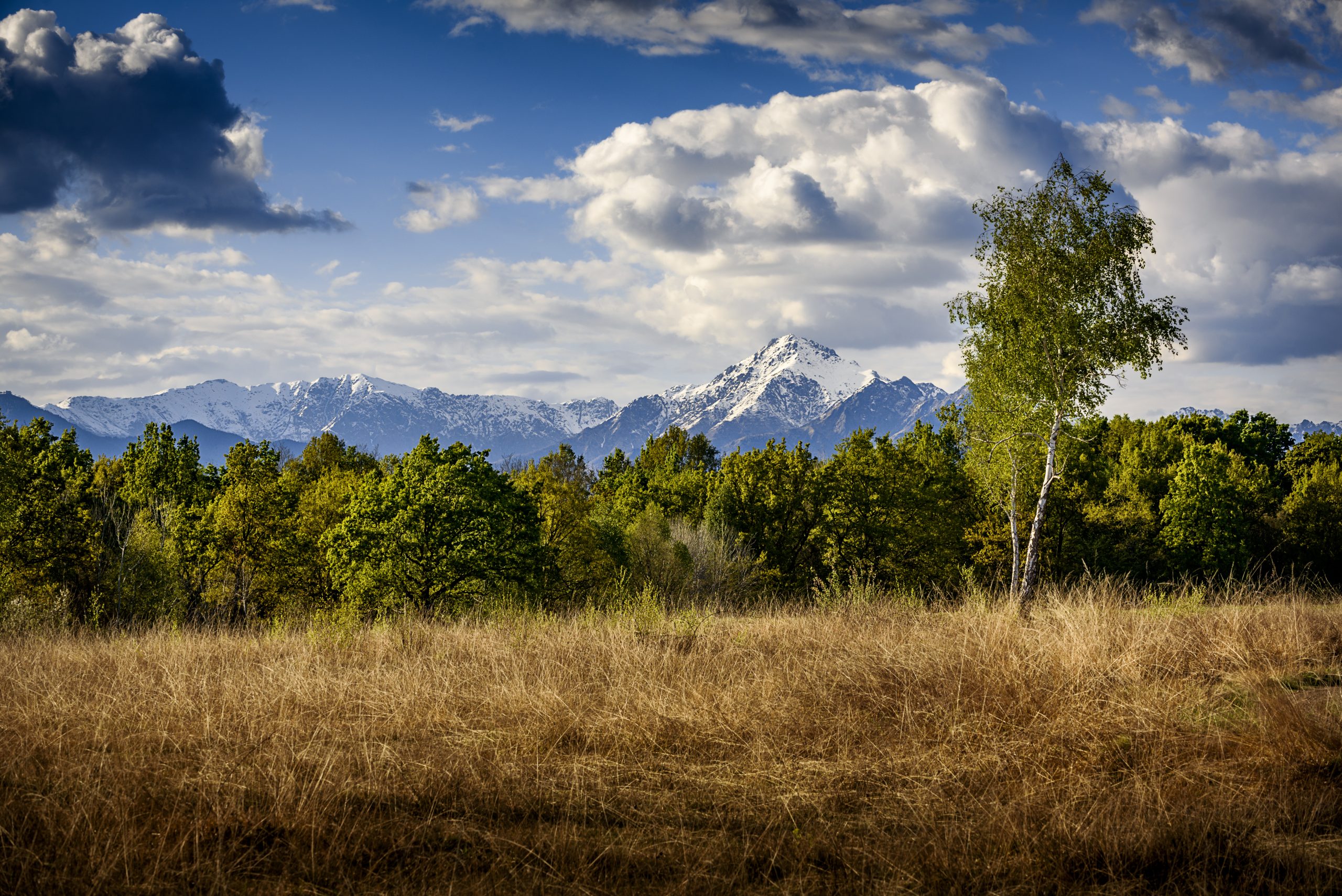
THE BARAGGIA OF LENTA
Near Lenta you will find one of the portions of Baraggia protected by the Baragge Oriented Nature Reserve.
The Reserve aims at the protection and conservation of this particular environment, which at times resembles the African Savannah.
Until the 1990s, the military presence in Lenta was very strong. It is still strange to note that Baraggia di Lenta is the site of a small Italian Army base where almost 3,000 disused armoured vehicles from previous military operations are piled up, making it the largest concentration of armoured vehicles in the world.
Don’t miss in this area
Discover the wonders of Gattinara and Baraggia
Art and culture, nature, ancient traditions, food and wine excellence and outdoor activities: let the Lands of Gattinara and Baraggia win you over
Rovasenda
Description:

Located in the heart of the Baraggia region, Rovasenda is a small farming village with a splendid medieval castle dating back to 1170.
THE CASTLES OF ROVASENDA
Symbol of the village, the Rovasenda Castle built in 1170 stands in the centre of the village in a slightly elevated position. The fortified complex, remodelled several times over the centuries, features an enchanting 48 m high tower (built in 1459), which is among the most fascinating and best preserved in the Vercelli area.
When visiting Rovasenda, you can see that, a few hundred metres from the old castle, there is a second one, built with similar features to the previous one. Constructed in the early 20th century by the famous architect from Turin, Carlo Nigra, the new Rovasenda castle was strongly desired by Count Luigi di Rovasenda who, not having been able to inherit the original manor house, decided to build one for himself.


THE ROVASENDA BARAGGIA
A striking African savannah-like landscape, seemingly boundless and framed by the imposing Alpine chain. The Baragge Nature Reserve is made up of six portions of land in the Vercelli area between Rovasenda, Roasio, Gattinara and Lenta. The Baraggia landscape is striking for its simplicity and balance of spaces and forms, for its borderless appearance that stretches endlessly. The most spectacular views are seen in early autumn when the golden colour of the grass is alternated with the typical pink patches of heather
Don’t miss in this area
Discover the wonders of Gattinara and Baraggia
Art and culture, nature, ancient traditions, food and wine excellence and outdoor activities: let the Lands of Gattinara and Baraggia win you over
Buronzo
Description:

Capital of the Baraggia region and an important agricultural and crafts centre, Buronzo is a small, charming town that guards a unique fortified complex, namely the consortium.
THE TOWN OF BURONZO
Formed by no less than seven castles, the ancient village owes its particular development to the family of the lords of Buronzo, who in the 14th century split into seven distinct branches, giving rise to the noble Consortium. Each noble branch, occupying and controlling a distinct portion of the castle, favoured the development of seven architectural clusters that gradually grew in different styles around the original core. Today, the old town appears almost as a scenic space, with many suggestive views, overlooked by buildings that preserve elements from different eras, such as medieval loopholes, 18th century façades and colourful mosaics
Going up the charming Via Castello, you come across a must see site, the Parish Church of St. Abbondio, from where you can enjoy an enchanting view of the plain below and the Mount Rosa chain.
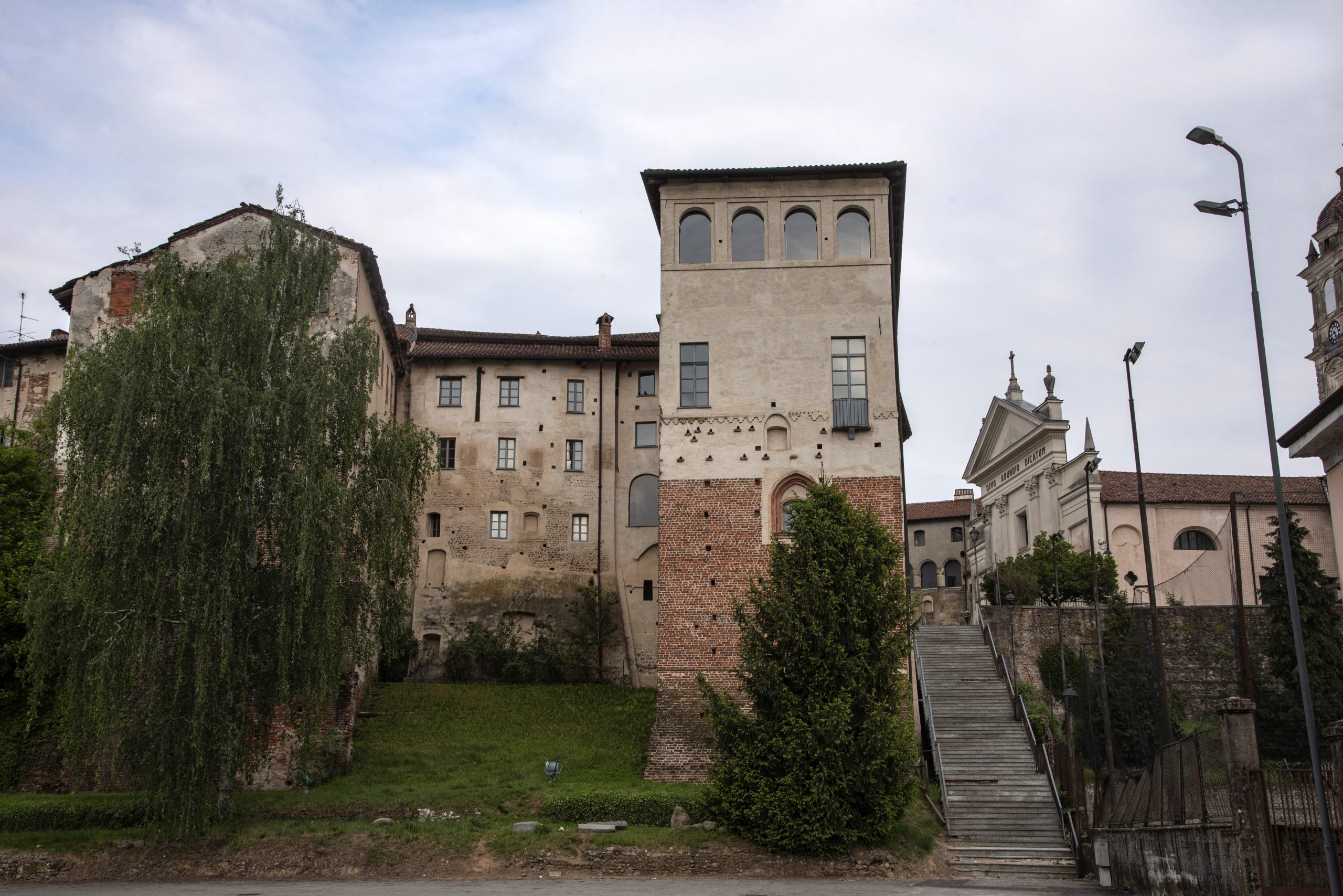

BARAGGIA PDO RICE
In the lands of Baraggia, the particular environmental characteristics and the centuries-long work of selection and cultivation experimented by the area’s rice growers have improved the quality of the rice produced against a lower yield. This was the only way to obtain the first and only rice PDO in Italy in 2007, the rice of Baraggia Biellese and Vercellese.
As indicated in the product specifications, 28 municipalities make up the delimited area for the production of the PDO in the provinces of Biella and Vercelli.
There are seven varieties of rice recognised as PDO: Arborio, Baldo, Balilla, Carnaroli, S. Andrea Loto and Gladio. From a dietary point of view, Baraggia rice stands apart for its greater resistance to cooking and its remarkable capacity to absorb flavours and seasonings.
Don’t miss in this area
Discover the wonders of Gattinara and Baraggia
Art and culture, nature, ancient traditions, food and wine excellence and outdoor activities: let the Lands of Gattinara and Baraggia win you over
Balocco
Description:

Situated in the heart of the Baraggia region, Balocco is a small farming town that preserves intact an ancient fortification dating back to the 15th century.
THE TOWN OF BALOCCO
From the central Piazza Castello, you can see an ancient fortification, which was first constructed in the year 1000, and later reconstructed from 1423 onwards, following the wars and devastation of the time. At the Balocco Castle, visit the donjon, the central tower and two corner turrets. The apse of the parish church of St. Michael the Archangel, formerly part of the fortified complex, is also visible from the square.
Leaving the town and proceeding in the direction of Buronzo, you come to a deviation leading to the small hamlet of Bastia. The name clearly indicates a fortified place, around which several houses of settlers who wished to have a church were built in the 16th century.


BIKING IN BARAGGIA
is an ideal destination for those who love the outdoors and slow tourism. The various routes immersed in the nature of the Vercelli rice fields offer the opportunity to admire authentic places that are unique with different scenarios in every season.
Among the most interesting itineraries to undertake by bicycle, we recommend Rice Field Cycle Path no.7 which, starting from Vercelli, passes through the main towns of the Baraggia area, finally reaching the hills of Gattinara.
Don’t miss in this area
Discover the wonders of Gattinara and Baraggia
Art and culture, nature, ancient traditions, food and wine excellence and outdoor activities: let the Lands of Gattinara and Baraggia win you over
Alice Castello
Description:

Crossed by the “Via delle Gallie” since ancient times, Alice Castello is a small town near Lake Viverone.
THE TOWN OF ALICE CASTELLO
The Alice Castello area was a place of great transit in the Longobard era, as evidenced by the findings in some tombs of Longobard warriors discovered in the municipal area in 1893 and 1991. Besides the Church of San Germano dell’Arborata, attested since the Middle Ages, we find the parish church (1745-1767), which, dedicated to St. Nicholas of Bari, dominates the plain.
There was most likely an ancient castle surrounding the hill on which the parish stands. There are only a few remains, precisely the entrance arch and part of the walls, which date back to the 12th century and were altered several times.

Don’t miss in this area
Discover the wonders of the Lands of Rice
Art and culture, nature, ancient traditions, food and wine excellence and outdoor activities: let the Lands of Rice conquer you!
Santhià
Description:

One of the largest industrial and agricultural centres in the Vercelli area, since ancient times Santhià has been an important road and commercial junction crossed by the Via Francigena, of which it is the 44th stage.
THE TOWN OF SANTHIÀ
The town, which hosts the oldest historical carnival in Piedmont every year, preserves some precious testimonies of its medieval past in its historical town centre, such as the Teodolinda Tower and the crypt of St. Stephen in the parish church of St. Agatha.
In addition to the Via Francigena, of which Santhià has been a stage since the Middle Ages, another important route that starts in the town is the Oropa Path, a four-stage route that connects Santhià to the well-known Marian sanctuary in Biella.
A short distance from the city centre, along the Naviglio d’Ivrea you will find the Santhià experimental hydrometric station. This impressive 19th century building, which is currently closed to the public, is unique, and was built to measure the flow and distribution of water in Vercelli’s complex irrigation network. .


THE TOWN OF VETTIGNÈ
Just a few minutes’ drive from Santhià and not far from the Cavour Canal and the Elvo stream, lies the town of Vettignè, which has a 15th century castle. The Castle of Vettignè, which has many similarities with the manor of St. Januarius, has a rectangular body with circular tower and square corner tower. Once the centre of the defensive hinge, the castle had a mill, a moat and a drawbridge inside. Over the centuries it was restructured several times, the last intervention dating back to the 19th century, and gradually lost its defensive characteristics to establish itself as an agricultural country residence, as a result of the renewed calling of the surrounding area for rice cultivation.
Don’t miss in this area
Discover the wonders of Gattinara and Baraggia
Art and culture, nature, ancient traditions, food and wine excellence and outdoor activities: let Gattinara and Baraggia win you over!
Tronzano Vercellese
Description:

Located near the Cavour Canal, Tronzano Vercellese is a small agricultural town linked since ancient times to the fate of the nearby town of Santhià.
THE TOWN OF TRONZANO
Formerly divided between Upper and Lower Tronzano, which were later united into a tax-free town (burgfrieden) from the middle of the 13th century, the town is located in a rich flat area traversed by numerous watercourses, which are essential for the irrigation of the land and the cultivation of rice.
In the town, you can admire the parish church of Saints Peter and Paul, located in the centre of the town, at the edge of the main square and built by the community between the years 1732-1752, and the ancient Church of St. Martin, which dates back to 1256.
Standing on the edge of the town, with all the beauty of a national monument, is the 11th century Church of St. Peter at the cemetery. At the beginning of the 13th century, abandoned and heavily damaged, it became a shelter for knights from France on their way to the Holy Land during the Crusades. It was later recovered.


THE CAVOUR CANAL
The most important engineering work in the Lower Vercelli area, with effects on the municipality of Tronzano V.se, is the Cavour Canal, an artificial canal built to support agriculture and, particularly, rice cultivation.
The Canal, deemed very important by the statesman from Piedmont, Camillo Benso Count of Cavour, after whom it is named, is about 85 km long. It was made entirely by hand by thousands of men in just three years and, crossing the entire Vercelli plain, connects the Po river to the Ticino river.
Don’t miss in this area
Discover the wonders of the Lands of Rice
Art and culture, nature, ancient traditions, food and wine excellence and outdoor activities: let the Lands of Rice conquer you!
Moncrivello
Description:

Located at the border with the province of Turin, Moncrivello is an ancient town dominated by a stately castle set in a splendid scenic position and framed by the Alps.
THE TOWN OF MONCRIVELLO
Walking through the streets of Moncrivello, we recommend a visit to the Parish Church of St. Eusebius, built as it appears today in 1856 in Neoclassical style on the site of an old previously existing church. Only the bell tower, although renovated, has retained its Romanesque appearance. The Castle of Moncrivello, symbol of the town, is a medieval structure that originated around the year 1000. Featuring Romanesque architecture and valuable Renaissance elements, it is enclosed in a mighty city wall adorned with Ghibelline battlements. It was a leading fortress, and was transformed in the 15th century by Duchess Jolanda into a splendid residence, becoming the favourite castle of several famous noblewomen.
Near the village is the Sanctuary of the Blessed Virgin of Trompone, which was built in 1559. Interesting features are the three aisles and the dome that houses a cycle of frescoes attributed to Gaudenzio Ferrari.


ERBALUCE DI CALUSO GRAPEVINES AND THE BLUEBERRY SAGRA
The Blueberry and Moncrivellese Excellence Fair was launched in 2015 with the aim of enhancing the area and its products by linking them to the 0KM philosophy. The event takes place over three days with tastings, guided tours and events involving more than 100 exhibitors presenting products of excellence.
In addition to blueberries, the Moncrivello area hosts a small production zone of excellent wine where Erbaluce di Caluso grapevines are cultivated, a versatile vine from which various types of wine are made, from dry and sparkling wines to sweet and liquorous wines.
Don’t miss in this area
Discover the wonders of the Lands of Rice
Art and culture, nature, ancient traditions, food and wine excellence and outdoor activities: let the Lands of Rice conquer you!
Cigliano
Description:

Located on the edge of the Vercelli rice-growing area, Cigliano is an agricultural town of ancient Roman origins renowned for its fruit and vegetable production.
THE TOWN OF CIGLIANO
Neither the ancient castle nor the walls, destroyed by the fury of the Spanish, remain of Cigliano’s centuries-old history. The most important monument is the 18th century bell tower that rises to a height of 40 m. Tradition attributes the design to architect Filippo Juvarra, who was embellishing Turin and the Savoy kingdom in those years.
Not far away stands the imposing parish church of St. Emilianus, spacious and harmonious, presenting both Baroque and Neoclassical lines. The older Church of St. Defendente in Cavour Square dates back to 1643. It has a beautiful brick façade in the Baroque style of Piedmont, and is flanked by a bell tower.


THE FRUIT AND VEGETABLE EXCELLENCE OF VERCELLI
At the edge of the rice fields in the area of the province of Vercelli, which stretches at the foot of the Serra moraine hills are the major fruit and vegetable production centres of the Vercelli area.
The area between the municipalities of Borgo d’Ale, Cigliano and Alice Castello is particularly renowned for the production of asparagus, courgettes, kiwis, peaches and strawberry grapes.
The Saluggia area, on the other hand, is home to the namesake bean variety, which is widely used in traditional recipes and, especially, in the typical Vercelli dish called Panissa.
Don’t miss in this area
Discover the wonders of the Lands of Rice
Art and culture, nature, ancient traditions, food and wine excellence and outdoor activities: let the Lands of Rice conquer you!
Vercelli
Description:

Majestic churches, extraordinary museums full of artistic masterpieces, mediaeval towers, alleyways scenting of history and typical trattorias where you can enjoy traditional local dishes – come and discover Vercelli!
THE ABBEY OF ST. ANDREW, THE CATHEDRAL AND THE FRESCOES OF GAUDENZIO FERRARI
Symbol of the city for more than 800 years, the Abbey of St. Andrew is among the earliest examples of Gothic-Romanesque architecture in Italy. It has a majestic façade, an astonishing interior, and conceals a cloister and chapter house of rare beauty. The Cathedral of St. Eusebius is the most imposing church in Vercelli. Built on an ancient early Christian basilica, it houses the remains of St. Eusebius and a beautiful medieval crucifix. How can one not marvel at Gaudenzio Ferrari’s frescoes? The masterpieces of Piedmont’s Renaissance master can be found in the Church of St. Christopher, also known as the “Sistine Chapel of Vercelli”.


CAVOUR SQUARE, THE MUSEUMS AND MEDIEVAL VERCELLI
Economic centre and beating heart of the city, Cavour Square is surrounded by charming arcades and dominated by the beautiful Angel Tower. Narrow alleys and shopping streets lead off from the square, overlooked by ancient palazzos, religious buildings and medieval towers, which testify to the importance Vercelli in medieval times when it was considered among the most important metropolises in northern Italy. Evidence of this glorious past can still be seen in the city’s museums full of artistic treasures and masterpieces. Do not miss the Borgogna Museum, the Cathedral Treasure Museum and the Leone Museum with the MAC (Museum of Civic Archaeology).
RISOTTOS, RICE FIELD CYCLING ROUTES AND THE VIA FRANCIGENA
In Vercelli, the undisputed king of the table is rice. This is why you cannot leave without first tasting panissa, the typical dish par excellence, or a delicious risotto. Surrounded by thousands of hectares of rice fields, Vercelli is the ideal destination to explore the rice lands of Vercelli. Two-wheel enthusiasts can discover them by following the Rice Field Cycle Paths, pleasant itineraries in the Vercelli rice fields. Those who love to walk can, on the other hand, walk a stretch of the Via Francigena, an ancient path of faith that has crossed the city since the Middle Ages, an alternative way to discover the richness of this territory.

how to get there

how to reach vercelli
BY CAR
A4 Milan-Turin A26 junction at Biandrate, direction Alessandria for Vercelli Est exit (from Milan)
A4 Turin-Milan A26 junction at Santhià, direction Alessandria for Vercelli Ovest exit (from Turin)
BY TRAIN
Vercelli is on the Milan-Turin railway line
BY BUS
Daily bus services connect Vercelli with Biella, Varallo and Casale Monferrato
Don’t miss in this area
Discover the wonders of Vercelli
Art and culture, ancient traditions, food and wine excellence and many outdoor activities: let Vercelli win you over!
Livorno Ferraris
Description:
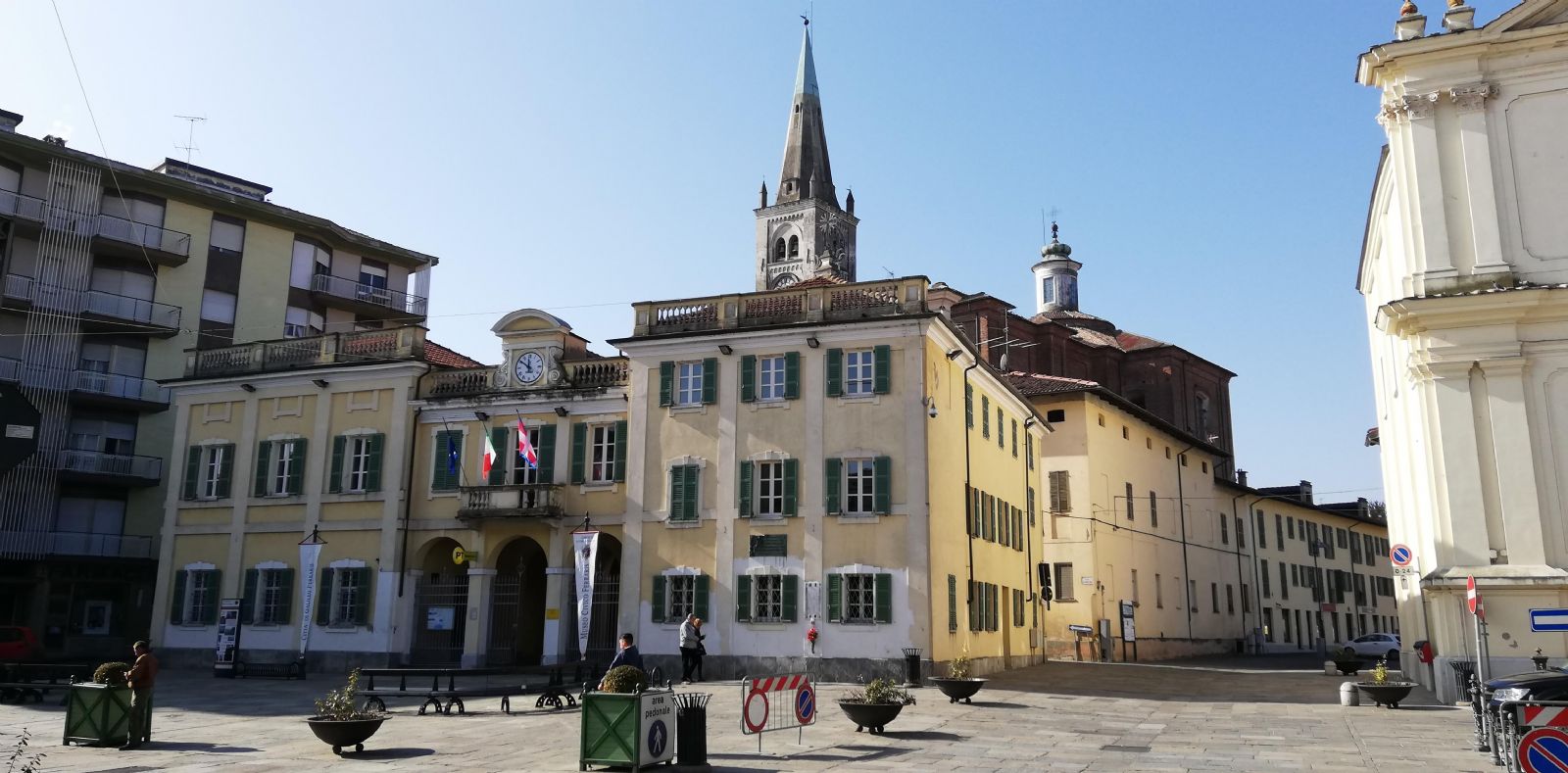
A small and charming agricultural town, Livorno Ferraris is known for being the birthplace of Galileo Ferraris, an illustrious 19th century physicist and engineer, inventor of the rotating magnetic field and of the first electric motor.
THE TOWN OF LIVORNO FERRARIS
In the charming historical town centre, which counts more than nineteen churches, we suggest a visit to the majestic parish church of St. Lawrence. It has an impressive 18th century organ, and the Ferraris Civic Museum dedicated to the scientist and his brother Adamo, Garibaldi’s personal physician.
Near the village, in addition to the very old church of St. Mary of Ysana, the only Templar church in the Vercelli area, is the Depretis Canal, an ancient 18th century canal that was among the first to allow irrigation of the rice fields in the central Vercelli area, which naturally lacked major waterways.


Rice-growing Conservatory
In the midst of the Vercelli rice fields and a short distance from Livorno Ferraris is the charming Colombara Estate, which houses the Rice-growing Conservatory. The estate represents a splendid example of a closed court farmhouse and houses, in addition to agricultural facilities and a modern rice mill, some faithful reproductions of a mid-twentieth-century rice mill. Within these spaces, part of the Conservatory of Rice Growing and open to visitors by reservation, the most representative environments of the history and life of the rice-growing world have been reconstructed, such as the artisan workshops, dwellings, the school and the evocative dormitory of the rice-workers.
Da non perdere
in questa area
Discover the wonders of the Lands of Rice
Art and culture, nature, ancient traditions, food and wine excellence and outdoor activities: let the Lands of Rice conquer you!
Saluggia
Description:

Situated on a steep embankment to the left of the Dora Baltea river, the small town of Saluggia is best known for the product of excellence that is grown here, the bean, much sought after for the typical Vercelli dish panissa.
THE TOWN OF SALUGGIA
The town of Saluggia, a point of transit for pilgrims on the Via Francigena, preserves the remains of the Castle, once an imposing fortification with six towers, and of Palazzo Pastoris, now the Town Hall, surrounded by a deep moat.
Near the town you can also admire a small jewel of 19th century hydraulic engineering and architecture, the Farini Canal Intake, an important canal built in 1868 to increase the flow rate of the larger Cavour Canal.
A short distance from Saluggia and the Dora Baltea is the Ritano Island Nature Reserve. The Reserve hosts environments of considerable naturalistic importance that distinguish this site from the surrounding area, endowing it with the value of an “ecological island”.


via francigena – from Moncenisio
The Via Francigena is one of the most important pilgrims’ paths in Europe, with more than 3,000 km to cover, linking Canterbury to Rome. Pilgrims coming from the Moncenisio Pass, after passing Chivasso, can choose three different routes to reach Vercelli. Two of these pass through Saluggia. The first route crosses the Dora Baltea river between Borgoregio and Saluggia, continues through Saluggia, Livorno Ferraris, Bianzè, and reaches Santhià, where it joins the branch of the Via Francigena coming from Gran San Bernardo. The second route, after reaching Saluggia, continues on to Lamporo, Castell’Apertole and, then, in the direction of Vercelli.
Don’t miss in this area
Art and culture, nature, ancient traditions, food and wine excellence and outdoor activities: let the Lands of Rice conquer you!
Asigliano Vercellese
Description:

Probably of Roman origin, Asigliano Vercellese is a small, characteristic village in the lower Vercelli area where the ancient and popular Bull Race takes place.
THE TOWN OF ASIGLIANO VERCELLESE
The small town, only a few kilometres from the city of Vercelli, is mainly known for the traditional Bull Race held in May during the Feast of St. Victor.
The most historically and architecturally valuable monuments in the town include: the Parish Church of St. Mary of the Assumption, which was first mentioned around the 13th century and has a Neoclassical façade; the castle, of which only the wall and part of the cylindrical tower remain; and the Church of St. Victor, located near the cemetery and dating back to the 15th century.
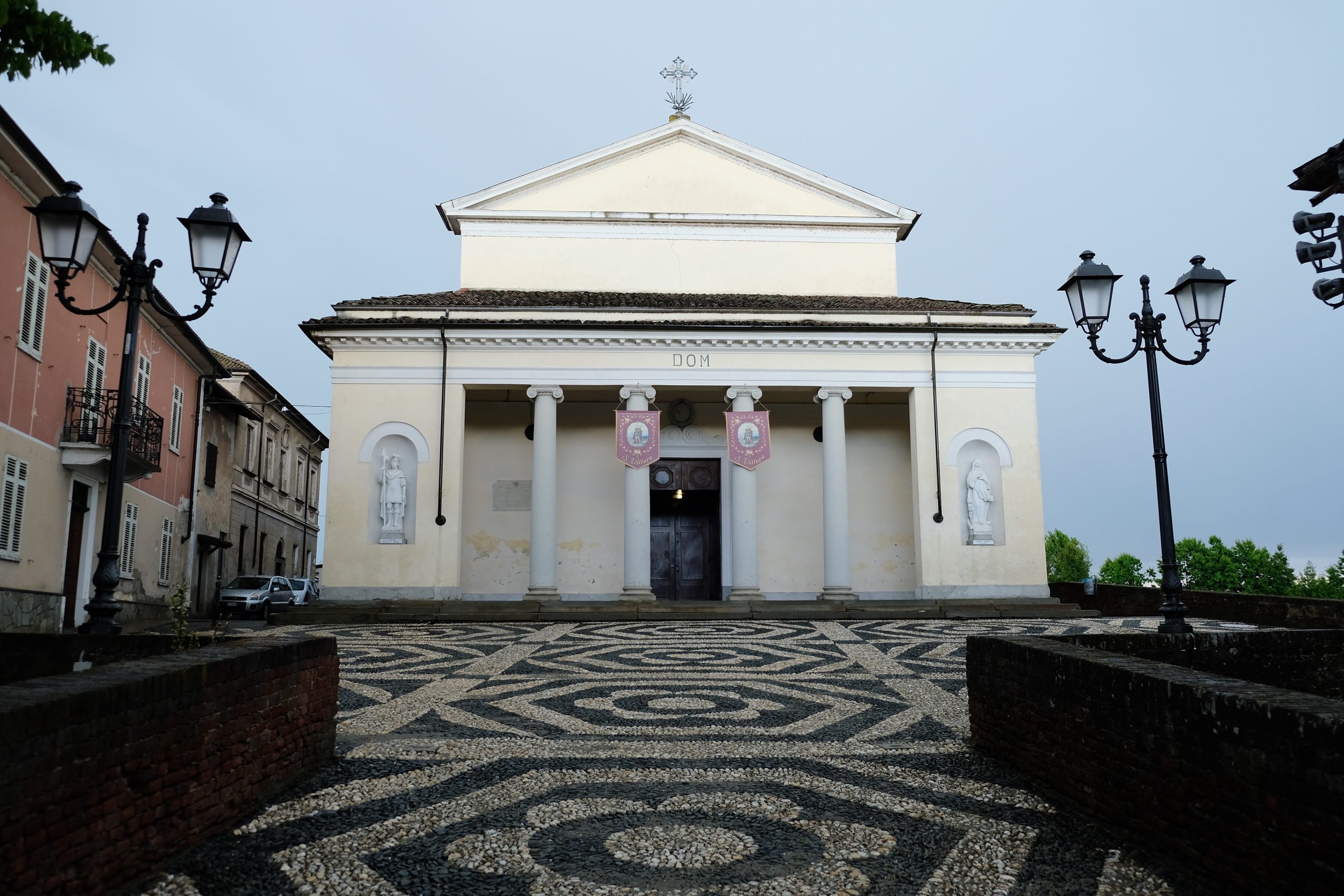

THE BULL RACE
This race, borrowed from the one held annually in Caresana, was probably born as a result of a religious vow made to the town’s patron saint during the 15th century, when a wave of pestilence decimated the population throughout the area.
The Feast of St. Victor and the Bull Race have been celebrated on the second Sunday in May since 1436. Initially, the ceremonial required the citizens of Asigliano to untie four pairs of oxen along the “lea dla stassion” as a thanksgiving to St. Victor. The rite was preceded by the singing of the Deus Teorum Militum.
Don’t miss in this area
Discover the wonders of the Lands of Rice
Art and culture, nature, ancient traditions, food and wine excellence and outdoor activities: let the Lands of Rice conquer you!
Crescentino
Description:

Situated at the confluence of the rivers Po and Dora Baltea, Crescentino is an ancient town that has been a strategic point for the control of the road network between the Monferrato, Vercelli, Asti and Turin areas over the centuries.
THE TOWN OF CRESCENTINO
In the town centre, which still retains its ancient medieval urban layout, is the town’s symbol, the 14th century Civic Tower with the largest bell in the province of Vercelli, the Crescentina. The Parish Church of St. Mary of the Assumption and the Sanctuary of the Madonna del Palazzo, surrounded by vegetation, are also of great interest.
Not far from the town is the St. Maria Island Nature Reserve, one of the protected areas of the Po River Park that is particularly interesting for birdwatchers, who can admire numerous colonies of resident birds here.
Crescentino is also located along the itinerary of the Via Francigena, one of Europe’s most important pilgrims’ paths, with over three thousand kilometres to cover on foot or by bicycle, connecting Canterbury to Rome, and then further south to Santa Maria di Leuca.


THE village OF ST. JANUARIUS
Agricultural estate and former site of an abbey, St. Januarius is the oldest Benedictine monastic settlement within what was once the Lucedio forest. Unfortunately, little remains of the ancient complex and all that is left as evidence of the original structure is now incorporated within the farmhouse Cascina Badia. The 14th century castle with an admirable circular tower surrounded by a fortress is worth a visit. Near the village, you will find the St. Januarius marsh, a special nature reserve, which preserves an important system of wetlands fed by springs and fountains. Traces of the ancient lowland forest and a remarkable variety of animals can be observed here.
Don’t miss in this area
Discover the wonders of the Lands of Rice
Art and culture, nature, ancient traditions, food and wine excellence and outdoor activities: let the Lands of Rice conquer you!
Fontanetto Po
Description:

An important agricultural centre on the edge of the province of Vercelli, Fontanetto Po is renowned as the birthplace of Giovan Battista Viotti, one of the greatest musicians of the 18th century.
THE TOWN OF FONTANETTO PO
The town, which owes its name to the numerous springs once present in its territory, is traversed by a dense network of irrigation ditches that gives a particular structure to the town centre.
The Church of St. Sebastian, a jewel of Romanesque-Gothic architecture in the Vercelli area, deserves mention. Continuing along Via Viotti, where Viotti’s birthplace is marked by a plaque, we come to the interesting parish church of St. Martin surmounted by a beautiful 56 m high Norman Romanesque bell tower.
Fontanetto Po is also part of the Piedmont Po Park. It is also the site of high standard musical events linked to the figure of Giovan Battista Viotti, the internationally renowned violinist, who was born in Fontanetto Po in 1755.


THE ANCIENT MILL – RICE MILL OF ST. JOHN
Near Fontanetto Po is the Ancient Mill – Rice Mill of St. John, the only surviving evidence, in the province of Vercelli, of a rice mill powered by water. The rice mill, which ceased production in the 1990s, is part of the Ecomuseum of Terre d’Acqua.
Upon reservation, you can visit the facility to discover the ancient rice processing methods, and admire the rice mill machinery operated by the force of water.
Don’t miss in this area
Discover the wonders of the Lands of Rice
Art and culture, nature, ancient traditions, food and wine excellence and outdoor activities: let the Lands of Rice conquer you!
Trino Vercellese
Description:

At the foot of the Monferrato hills lies Trino, an interesting town in the lowlands of Vercelli with a long-standing history.
THE TOWN OF TRINO
Trino was the main seat of the fiefdom of the Paleologi, a noble family that ruled the fate of the Marquisate of Monferrato from 1305 until 1532.
There are numerous artistic and architectural testimonies in the city: Palazzo Paleologo, seat of the Court of the Paleologi, which features Moorish decorative elements unique in Piedmont; the Church of St. Bartholomew, founded in medieval times; the Church of San Michele in Insula, just outside the town, which still retains its Romanesque appearance
o learn more about the history of Trino, you can visit the “G.A. Irico Civic Museum”, located in the centre of the town, which collects numerous local artefacts


LUCEDIO AND THE PARTECIPANZA WOOD
Not far from the town of Trino are two important testimonies to the past of the Vercelli area, precisely the Sorti della Partecipanza Wood in Trino, and the Abbey of Lucedio.
The Sorti della Partecipanza Wood is a rare example of a lowland wood that presents the original appearance of the Po Valley before its almost total transformation over the centuries for agricultural purposes.
A few kilometres away is the Abbey of Lucedio, the place where the introduction of rice cultivation was first documented in the 15th century thanks to the land reclamation work carried out by Cistercian monks.
Don’t miss in this area
Discover the wonders of the Lands of Rice
Art and culture, nature, ancient traditions, food and wine excellence and outdoor activities: let the Lands of Rice conquer you!
Palazzolo Vercellese
Description:

A small agricultural town, Palazzolo Vercellese was founded by the Romans along the Via Ticinum-Augusta Taurinorum, once an important route between Turin and Pavia.
THE TOWN OF PALAZZOLO VERCELLESE
Strolling through the narrow streets of Palazzolo, it is worth pausing to admire the charming little square in front of the parish church of St. Germano. Instead, the concrete aeroplane at the very entrance to the town is a curious detail. The trimotor aircraft, which certainly does not go unnoticed given its size, was used as a shower at the heliotherapy colony on the Po River.
From the village, looking out over the hills of Monferrato, you can see the calanchi, spectacular steep walls created by rainwater. The best way to discover these natural formations is to explore the surroundings of Palazzolo Vercellese on two wheels.


PIEDMONT PO PARK
A place of naturalistic excellence, the Piedmont Po Nature park was created to safeguard the river’s last natural environments. The protected areas between Crescentino and Trino are particularly interesting for birdwatchers, who can admire numerous colonies of resident birds here. In the vicinity of the river and within the protected areas, a number of routes, huts and resting places are signposted, allowing you to enjoy nature in complete relaxation. In the municipality of Palazzolo Vercellese, the picnic area is located in the area known as Isola Colonia where, in the early decades of the 20th century, a heliotherapy colony was built for the town’s children. It was unfortunately damaged in the flood of 2000.
Don’t miss in this area
Discover the wonders of the Lands of Rice
Art and culture, nature, ancient traditions, food and wine excellence and outdoor activities: let the Lands of Rice conquer you!




